CELSAn
Controlled Ecological Life-Support ArchitectureCELSAn is a distributed network of compact space-deployable architecture seeking to be a vital noospheric infrastructure for the future. Both the technological and the cognitive framework of Space are necessary to move towards a Noosphere, whose conscious establishment is a major task for a species positioned between cosmic endowment and steep existential risk.
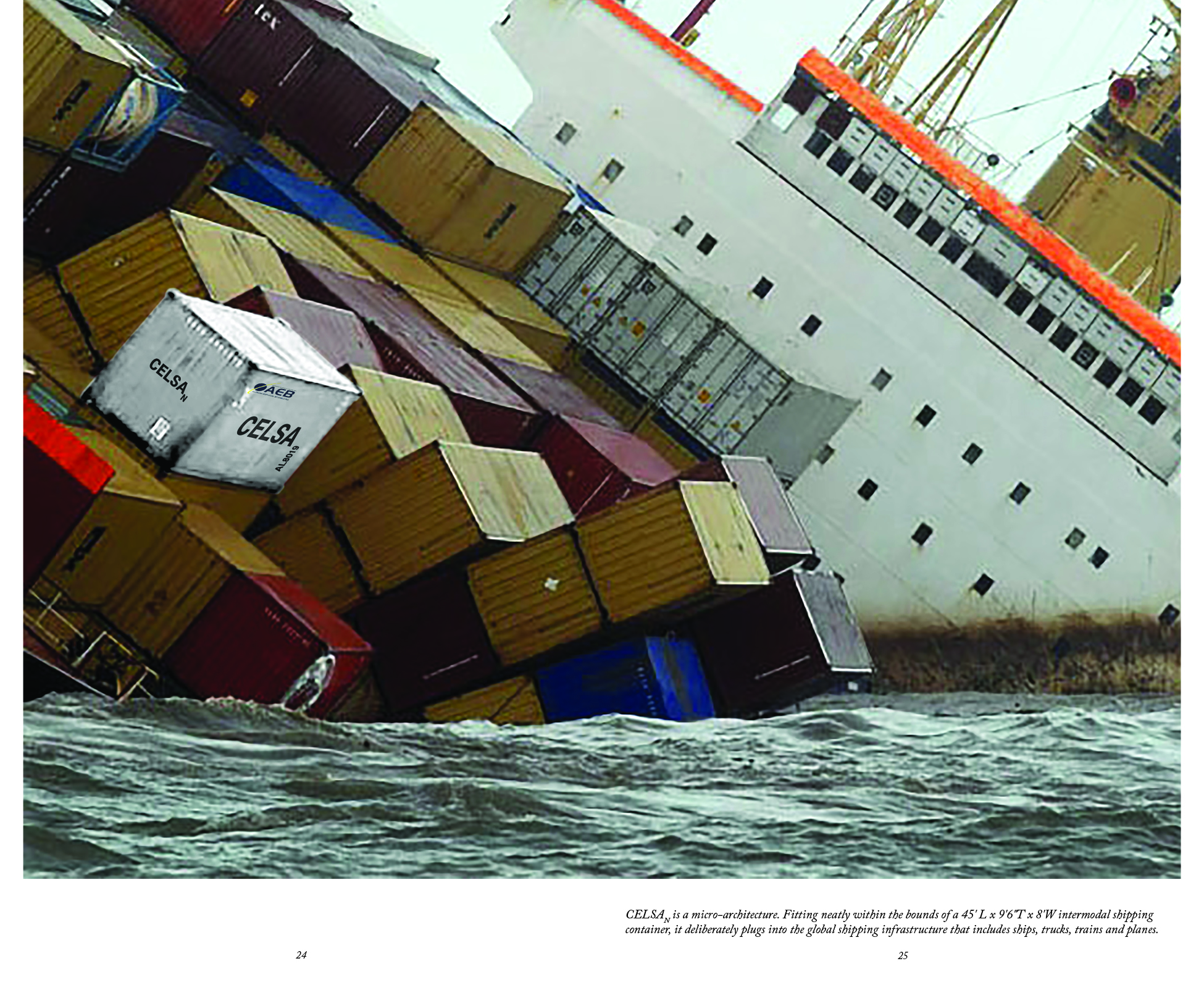
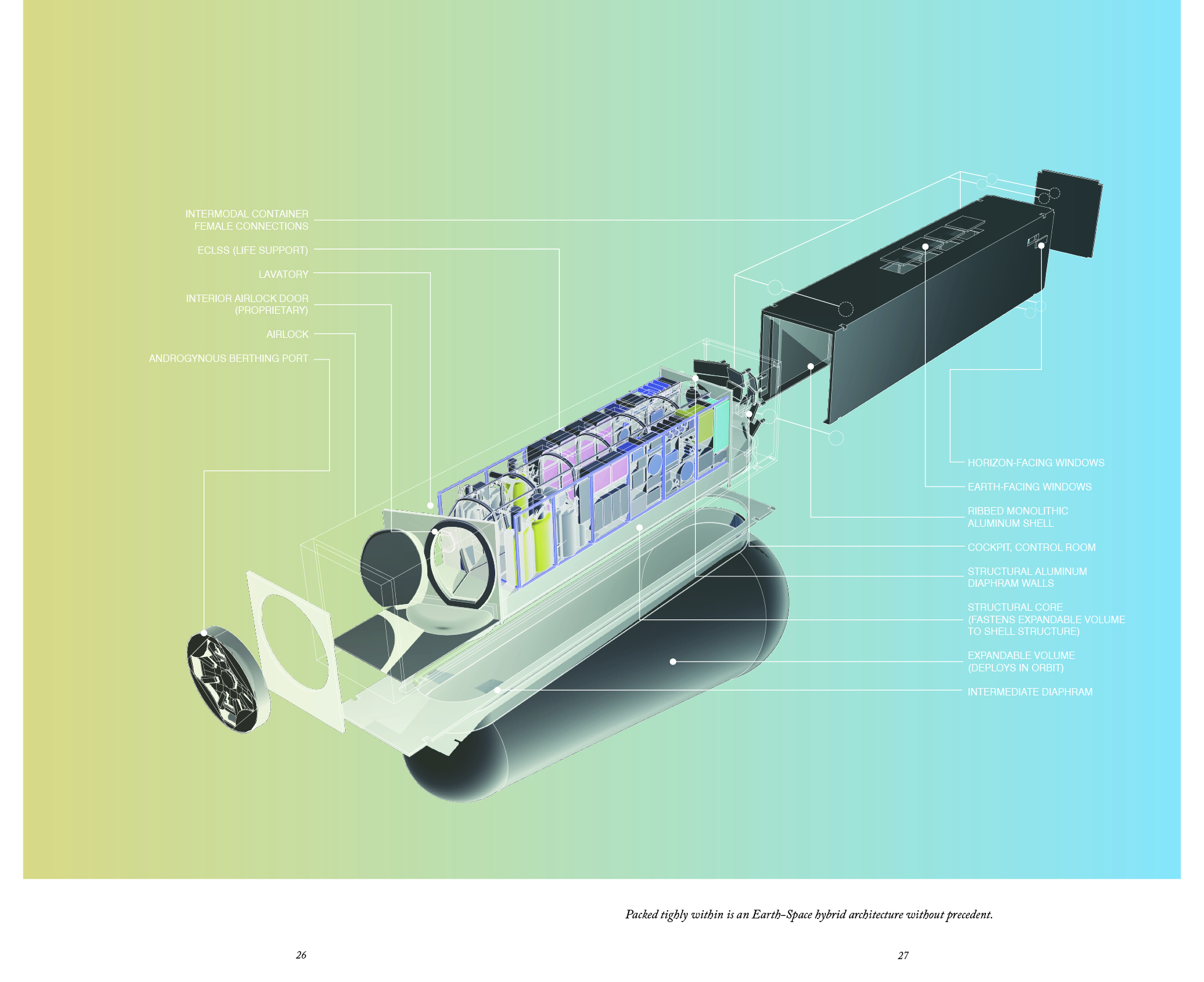

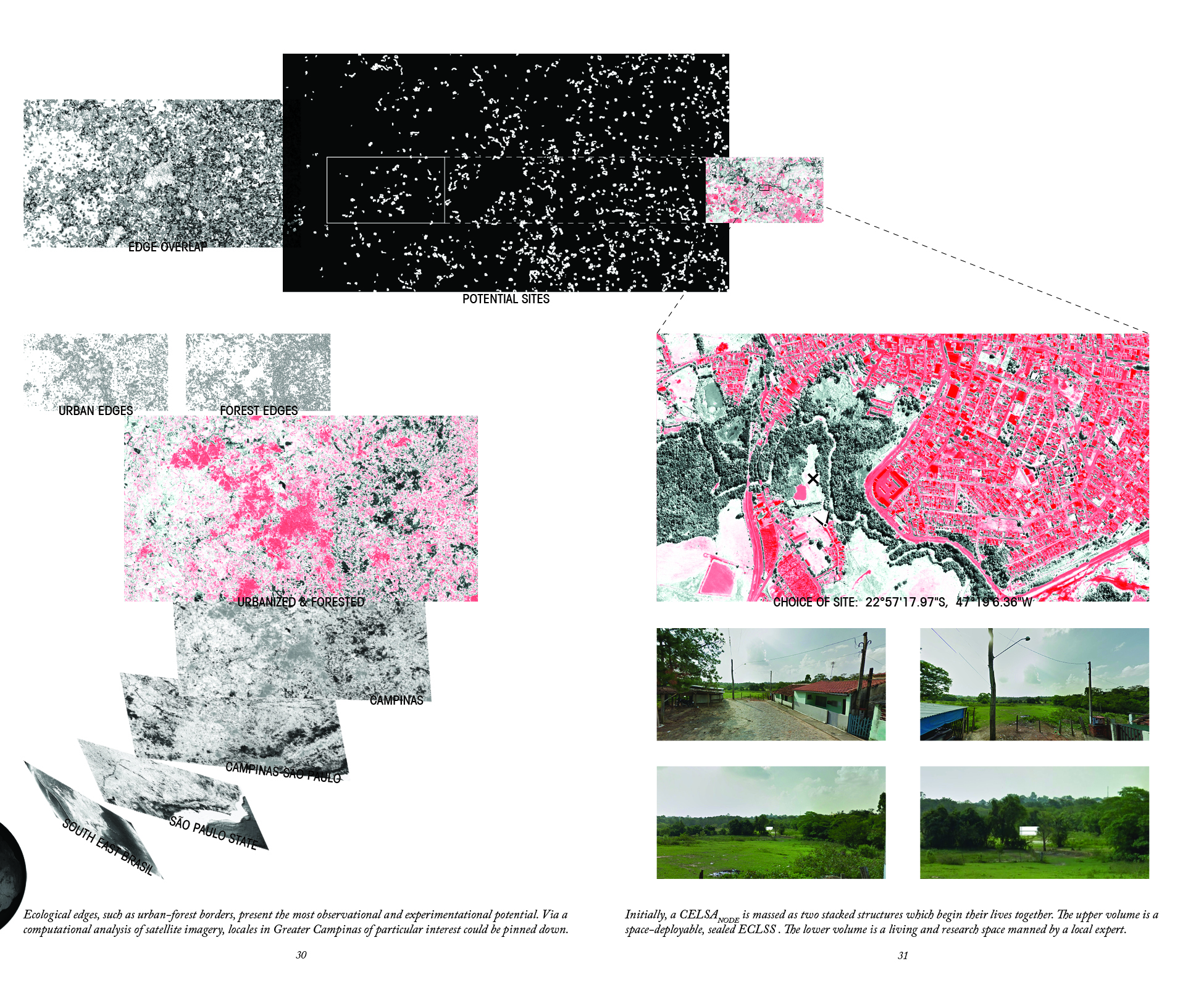

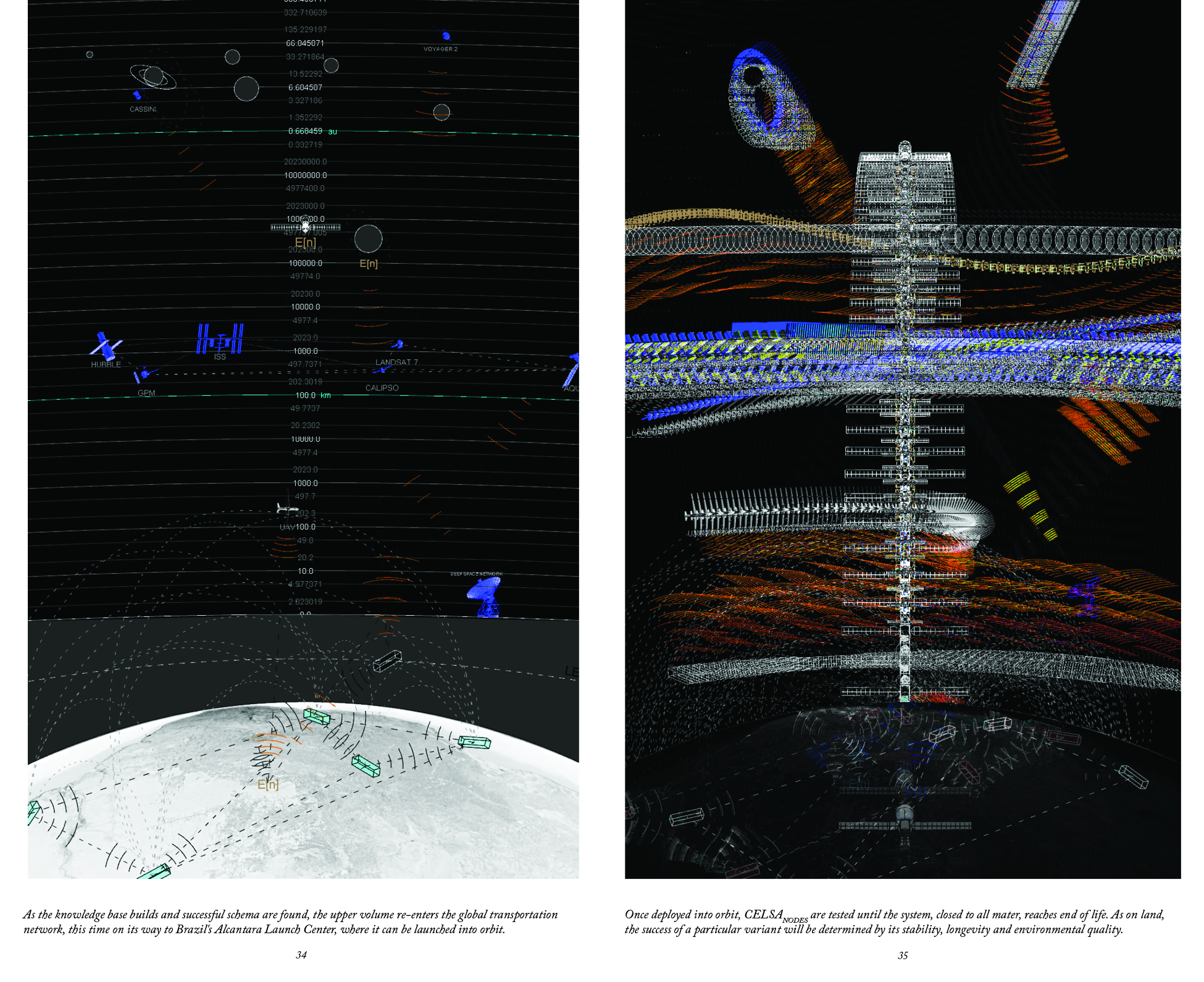
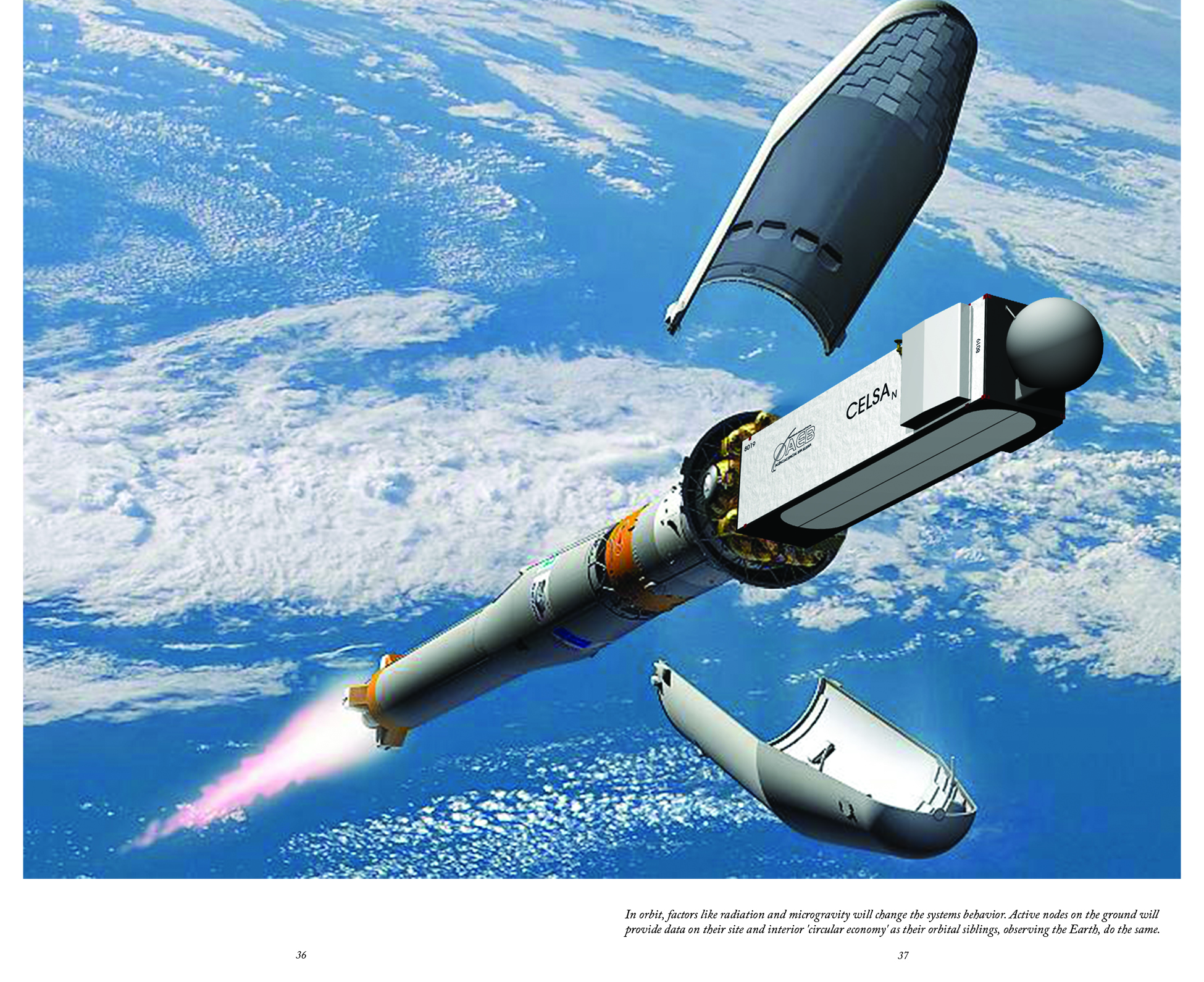
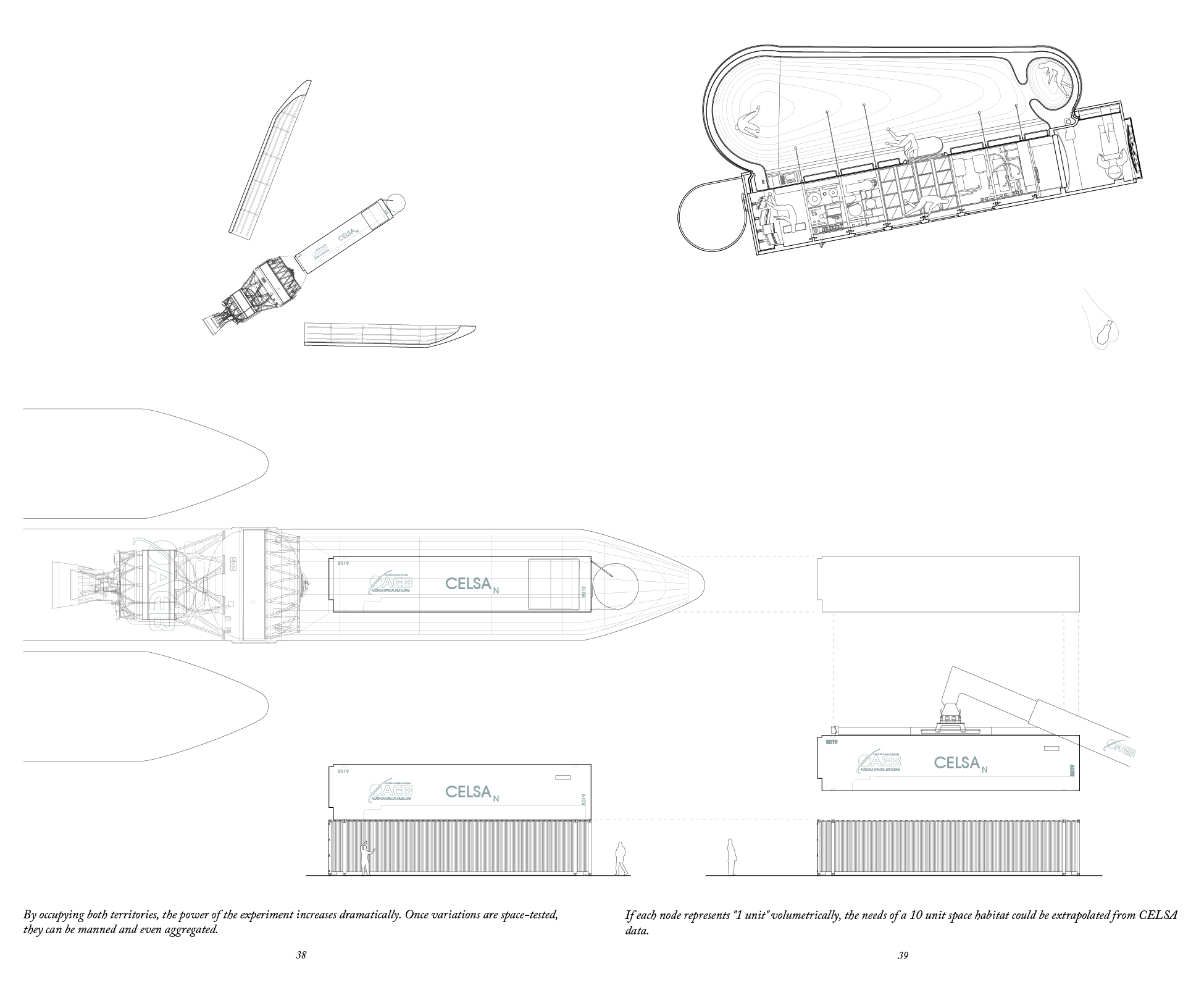



[video] animated site section
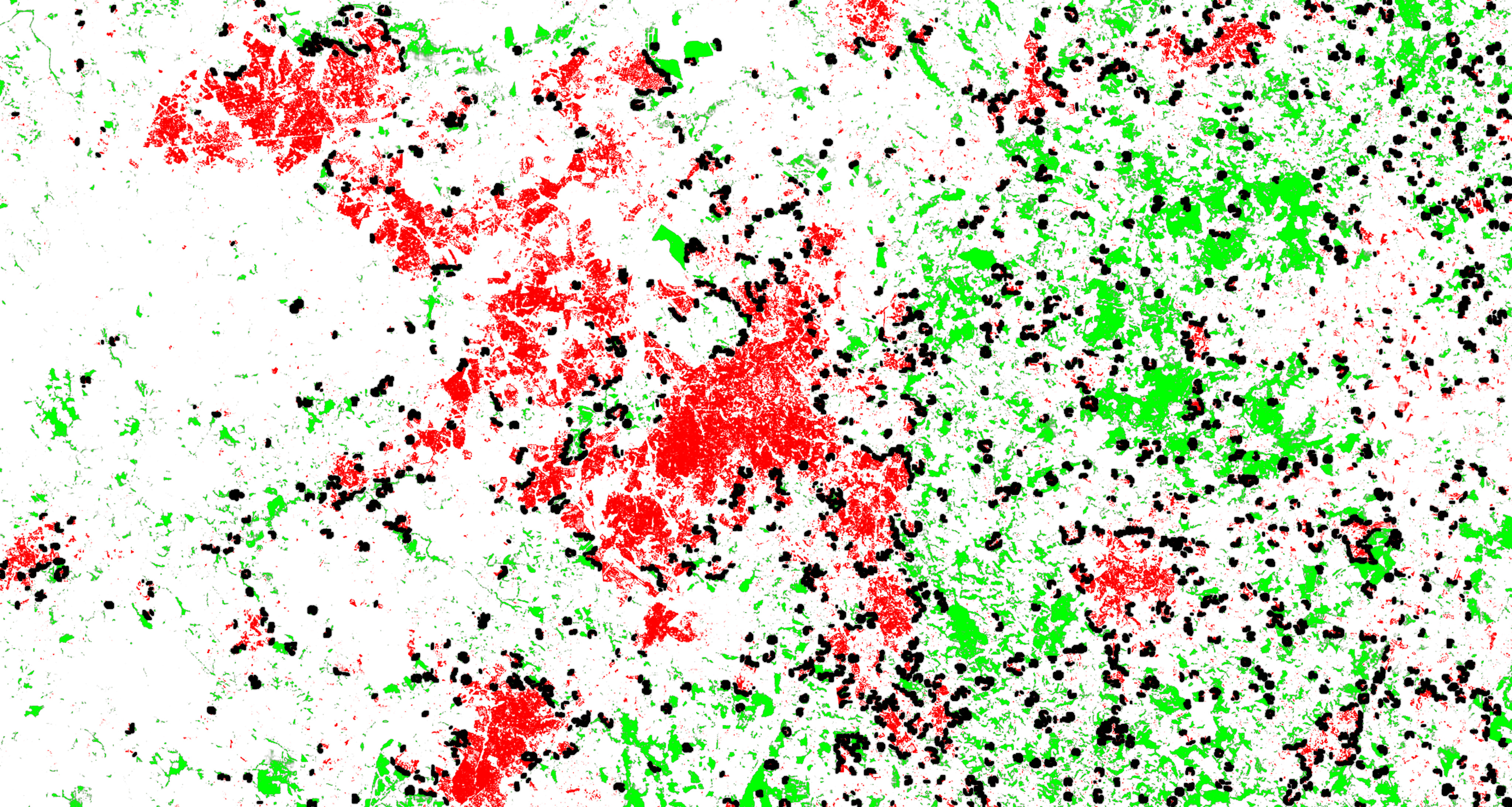
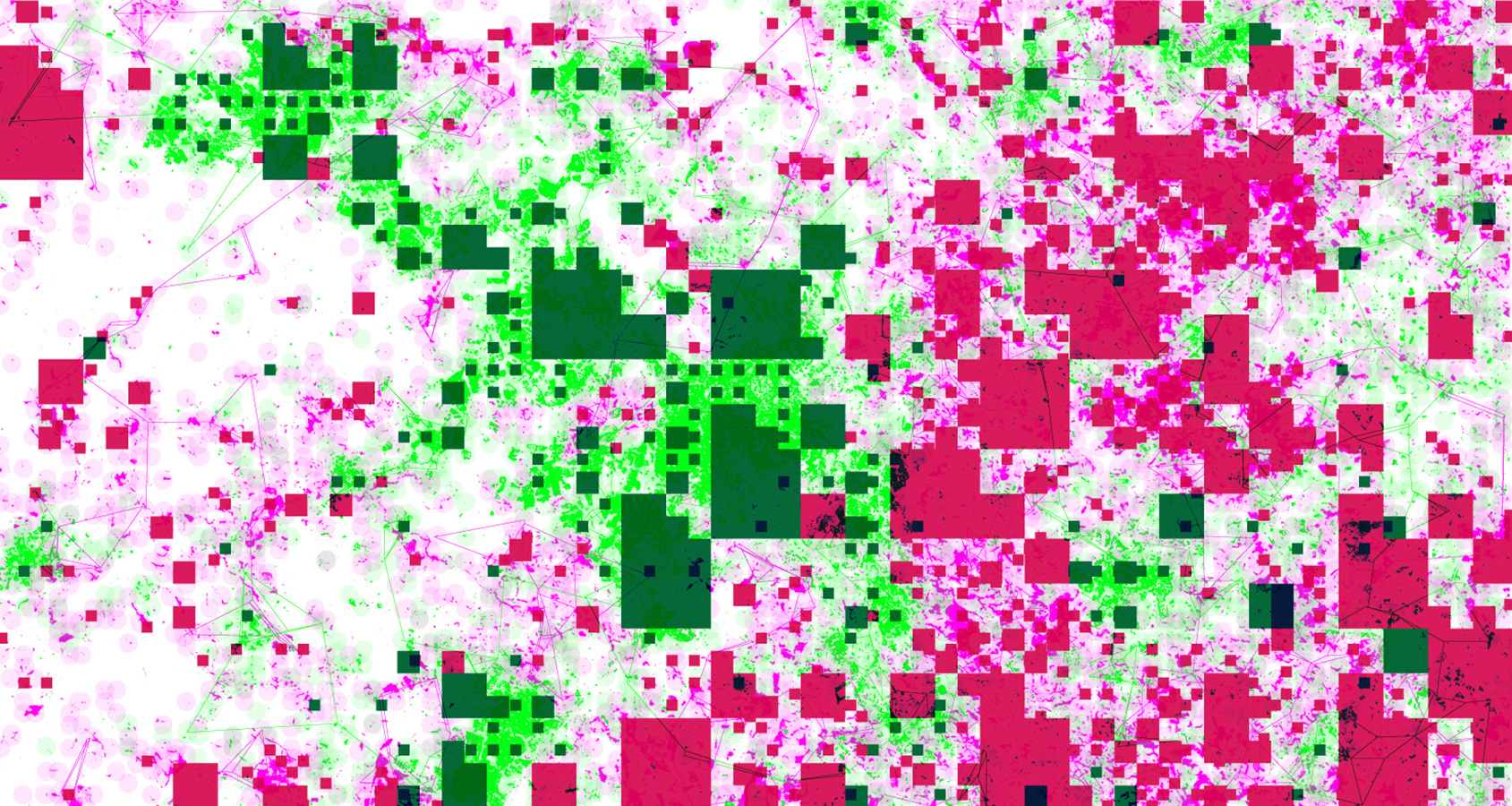
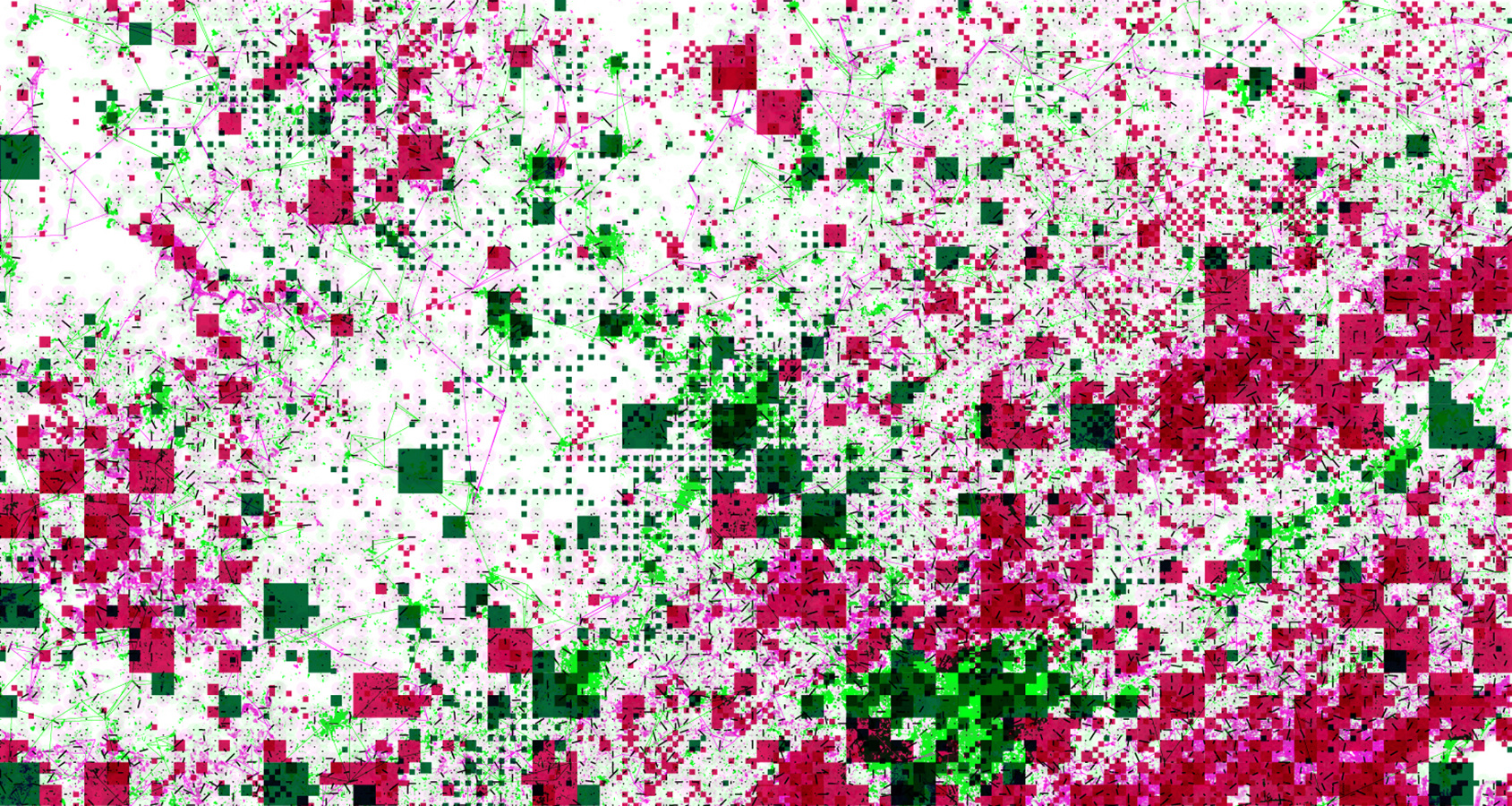

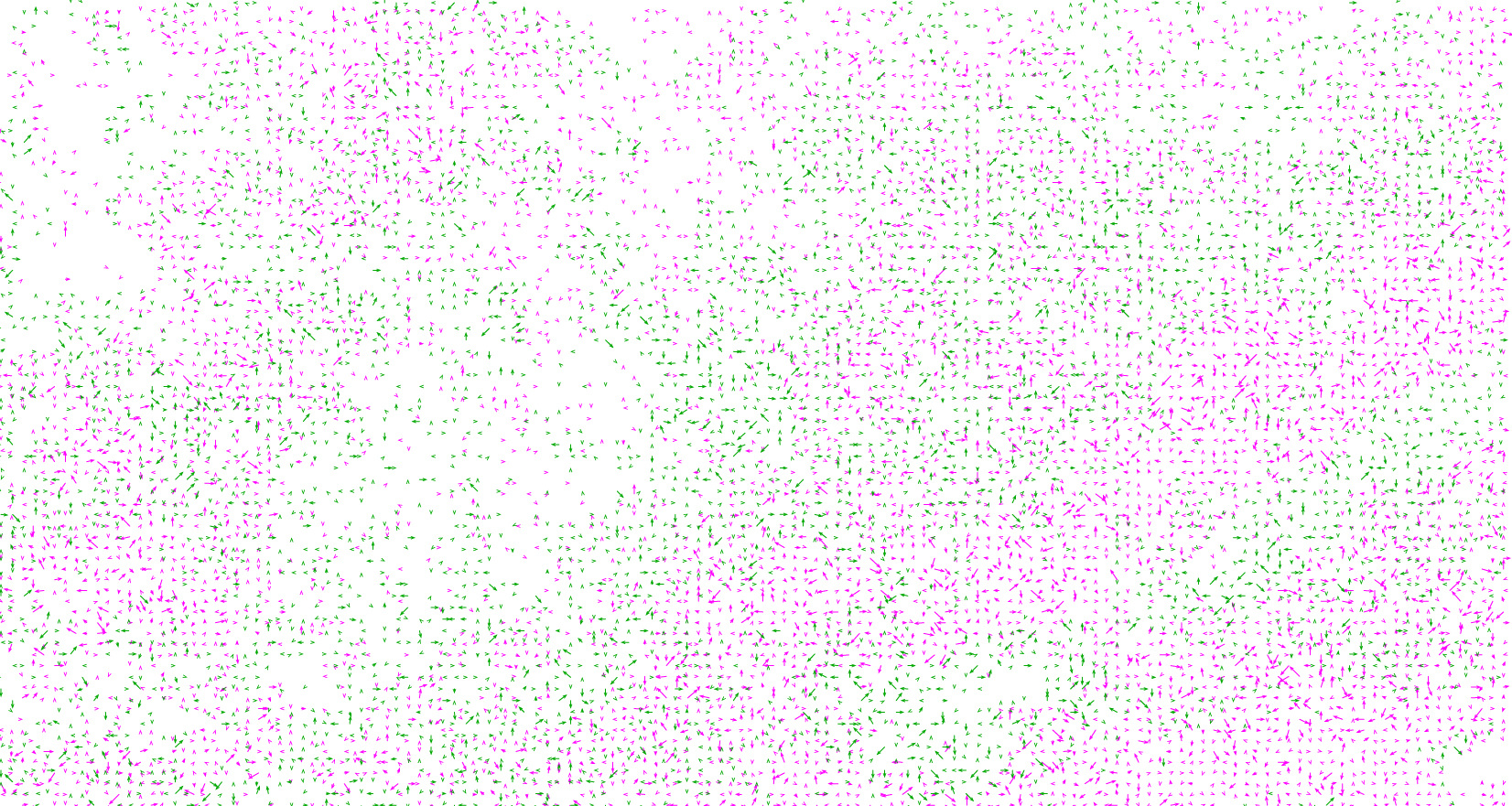


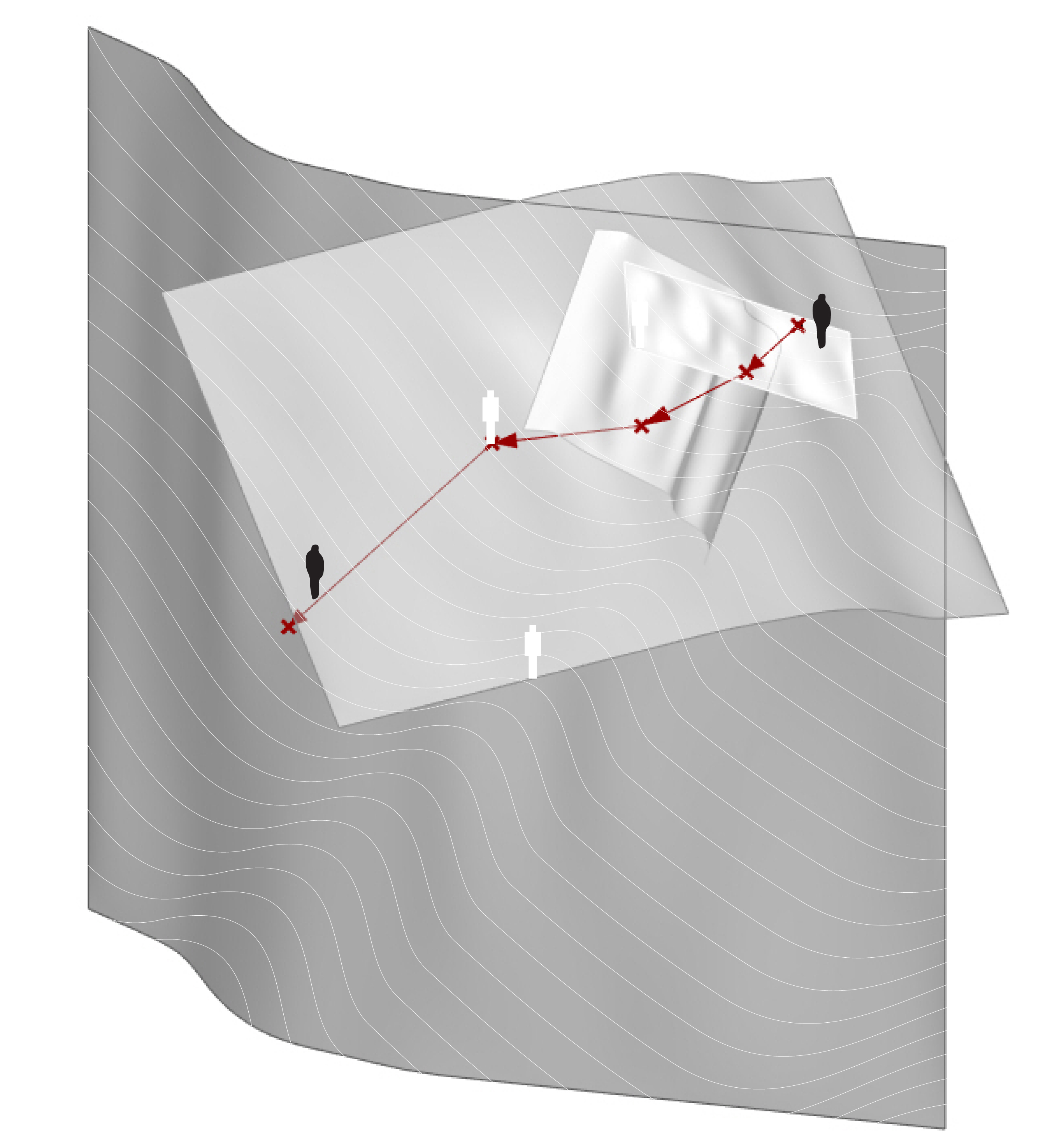
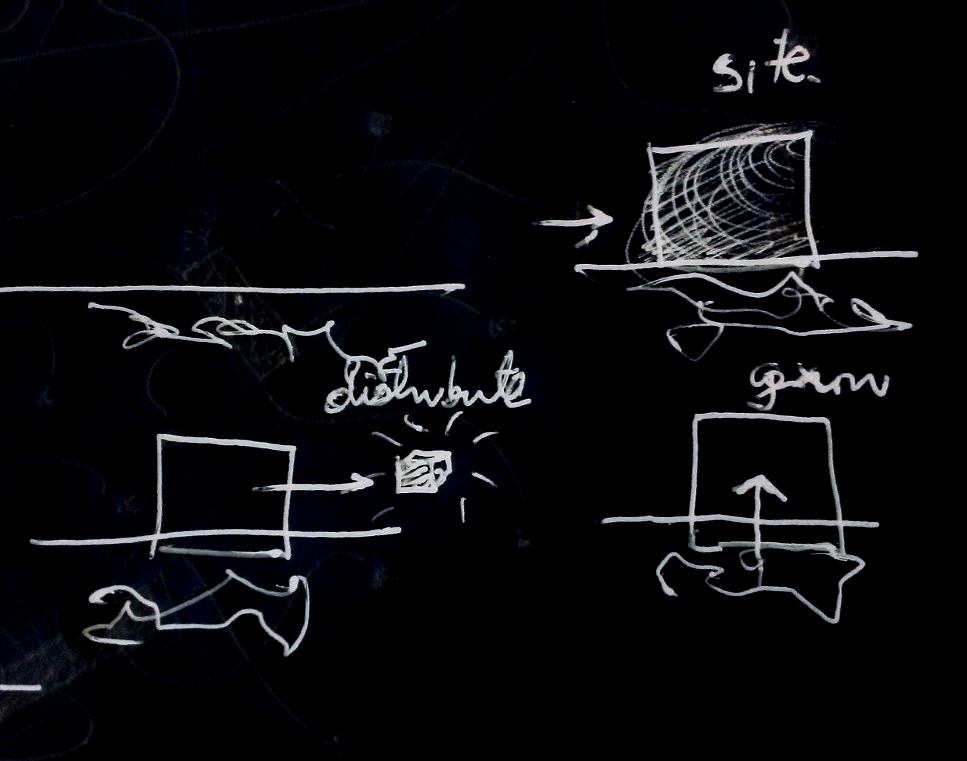
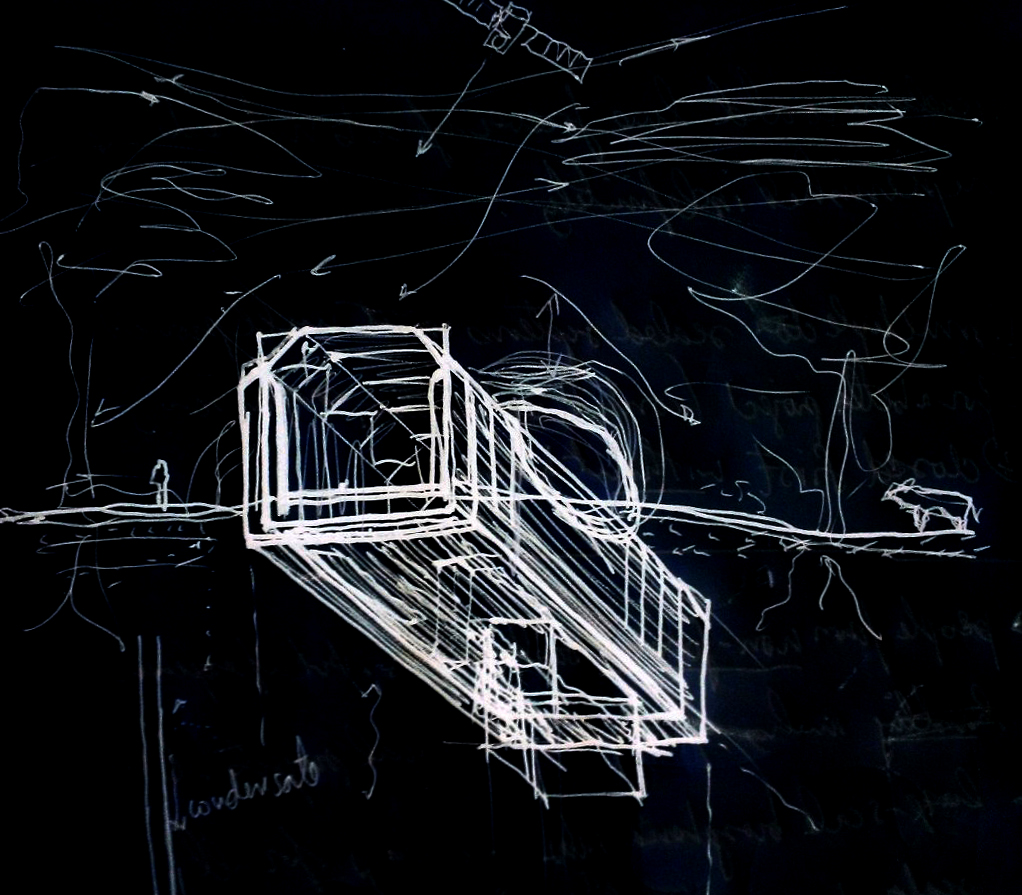

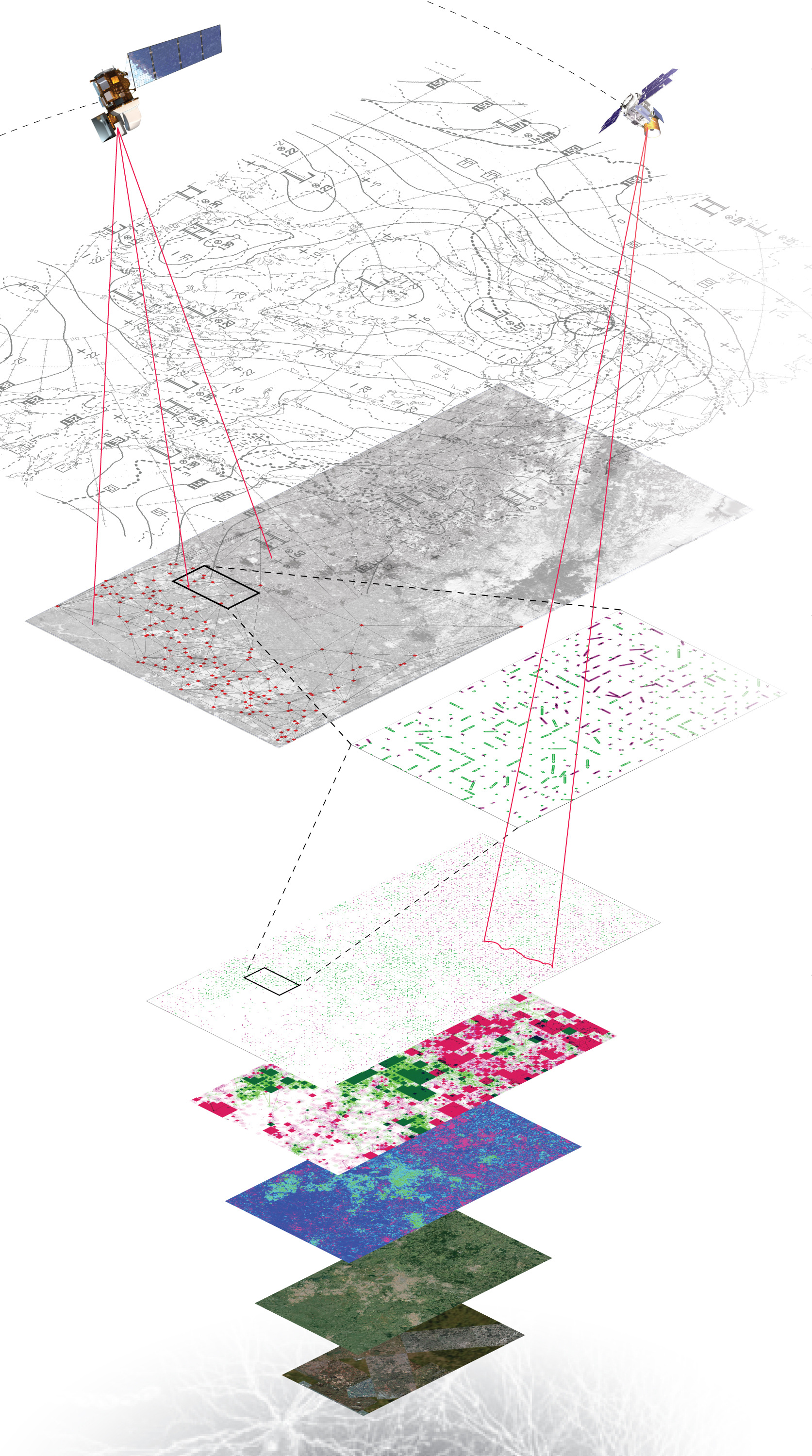
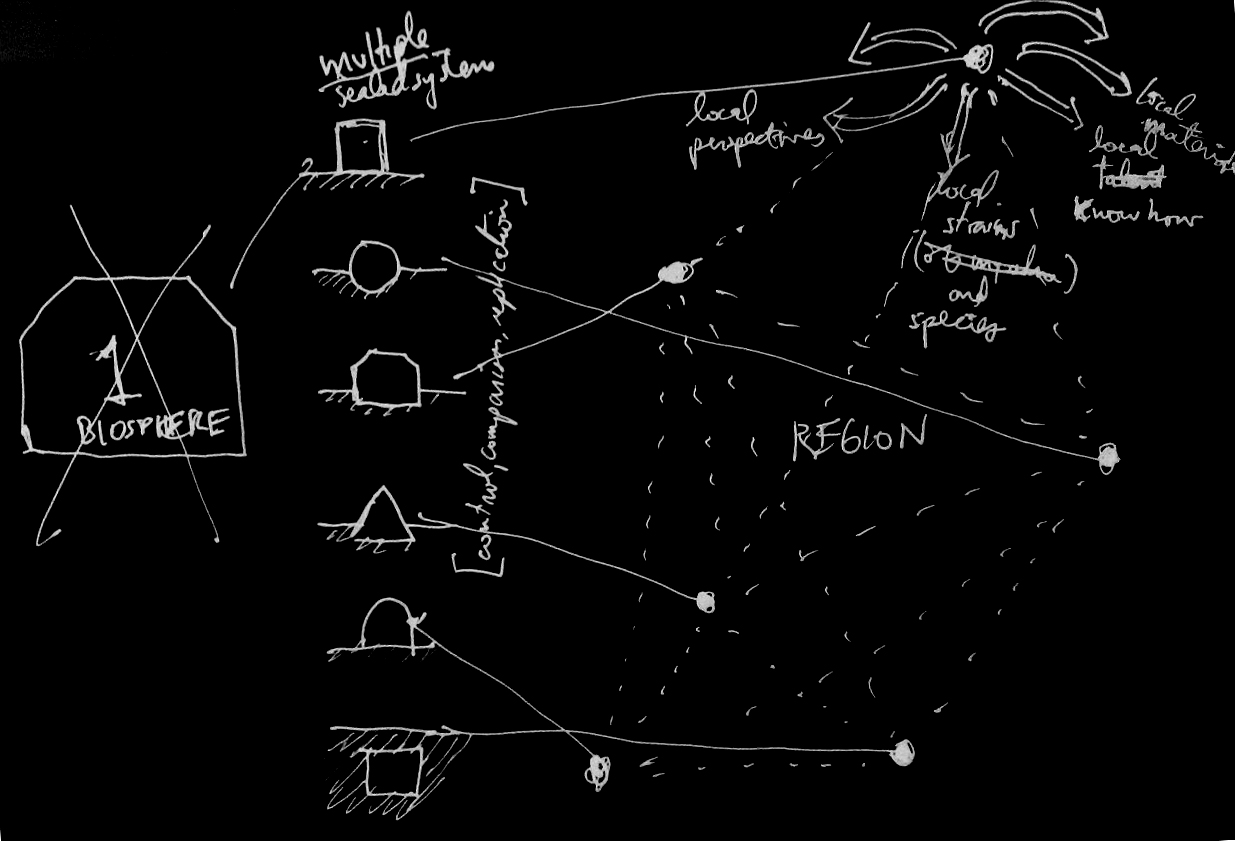
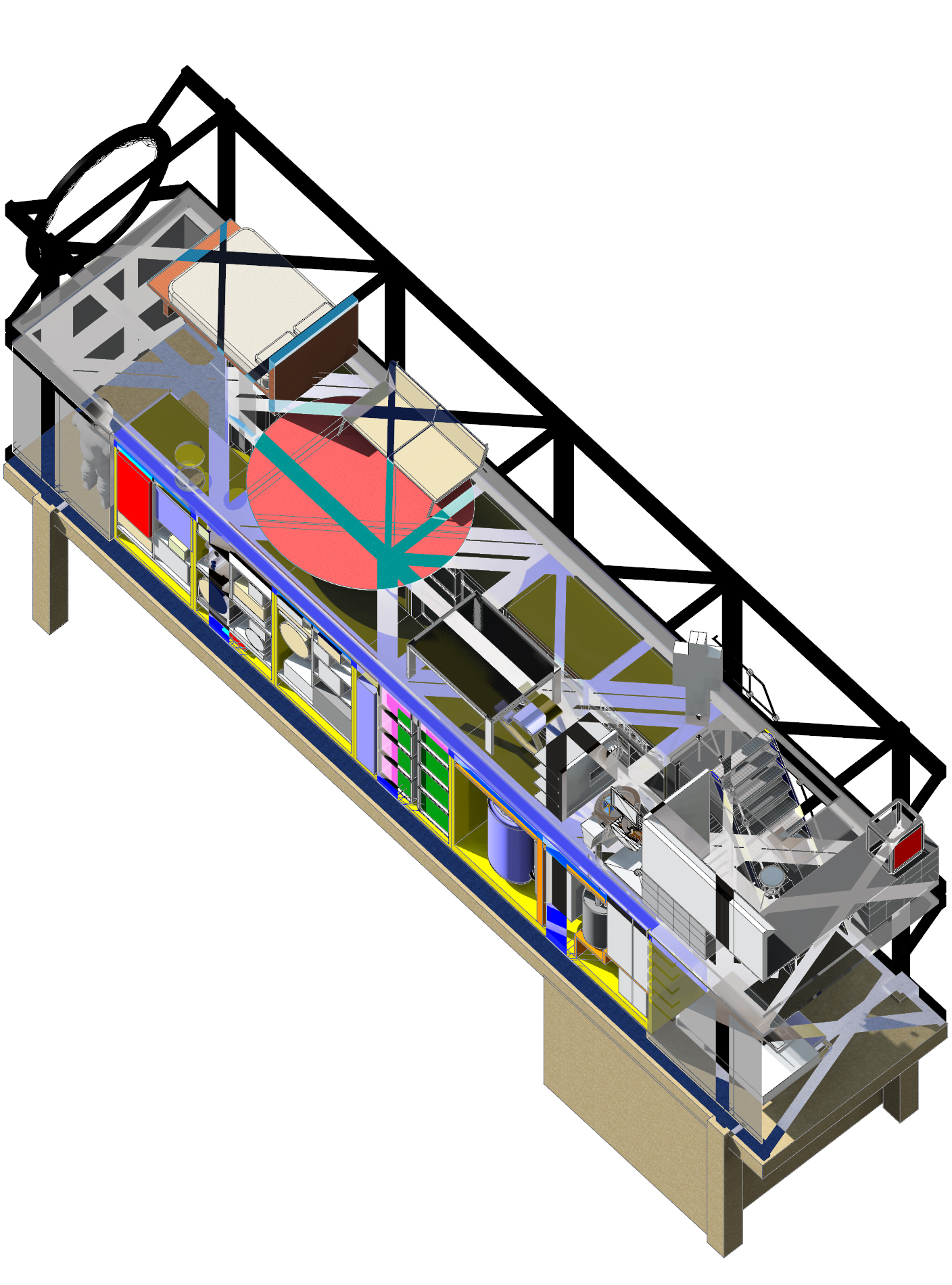
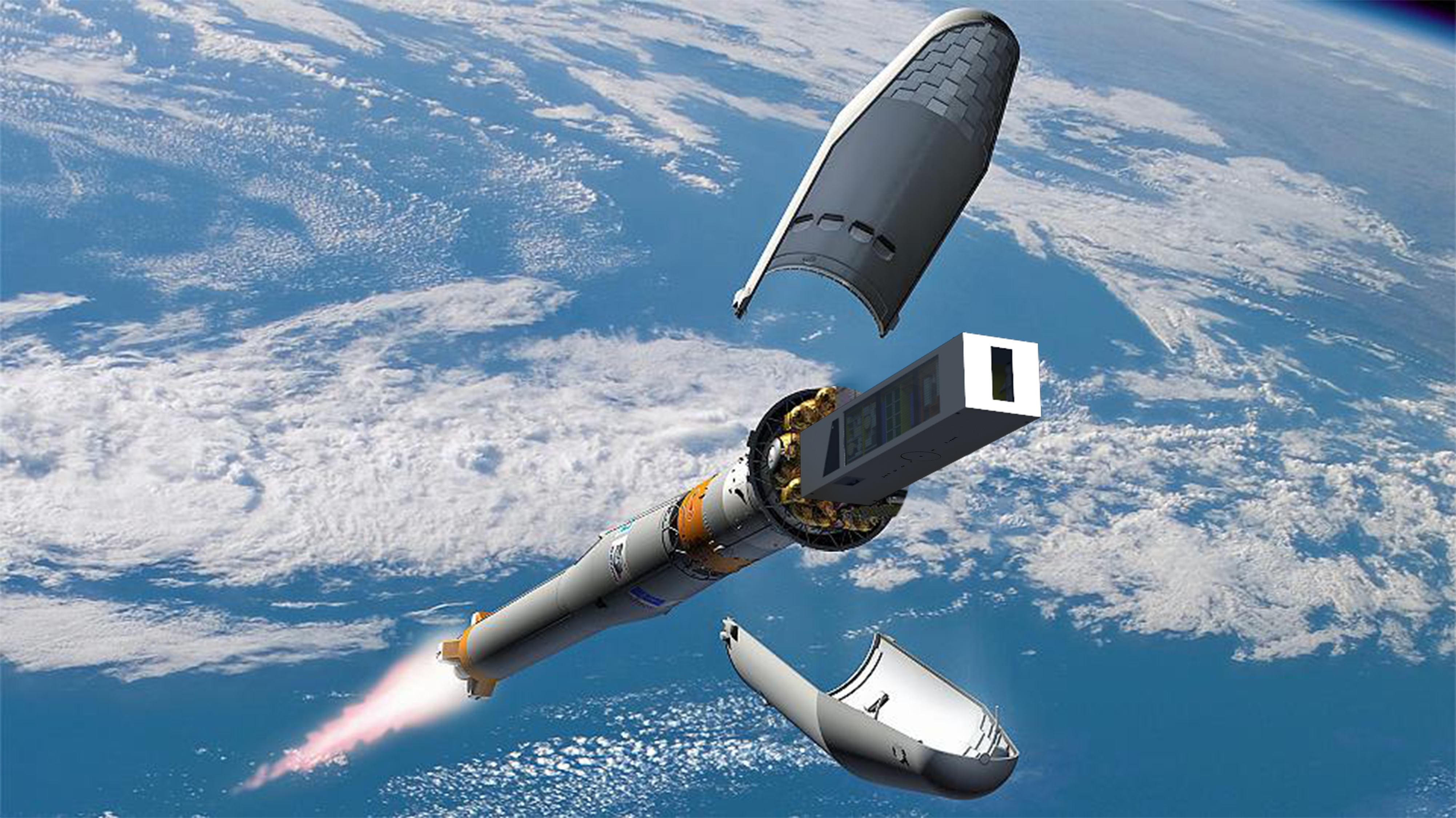

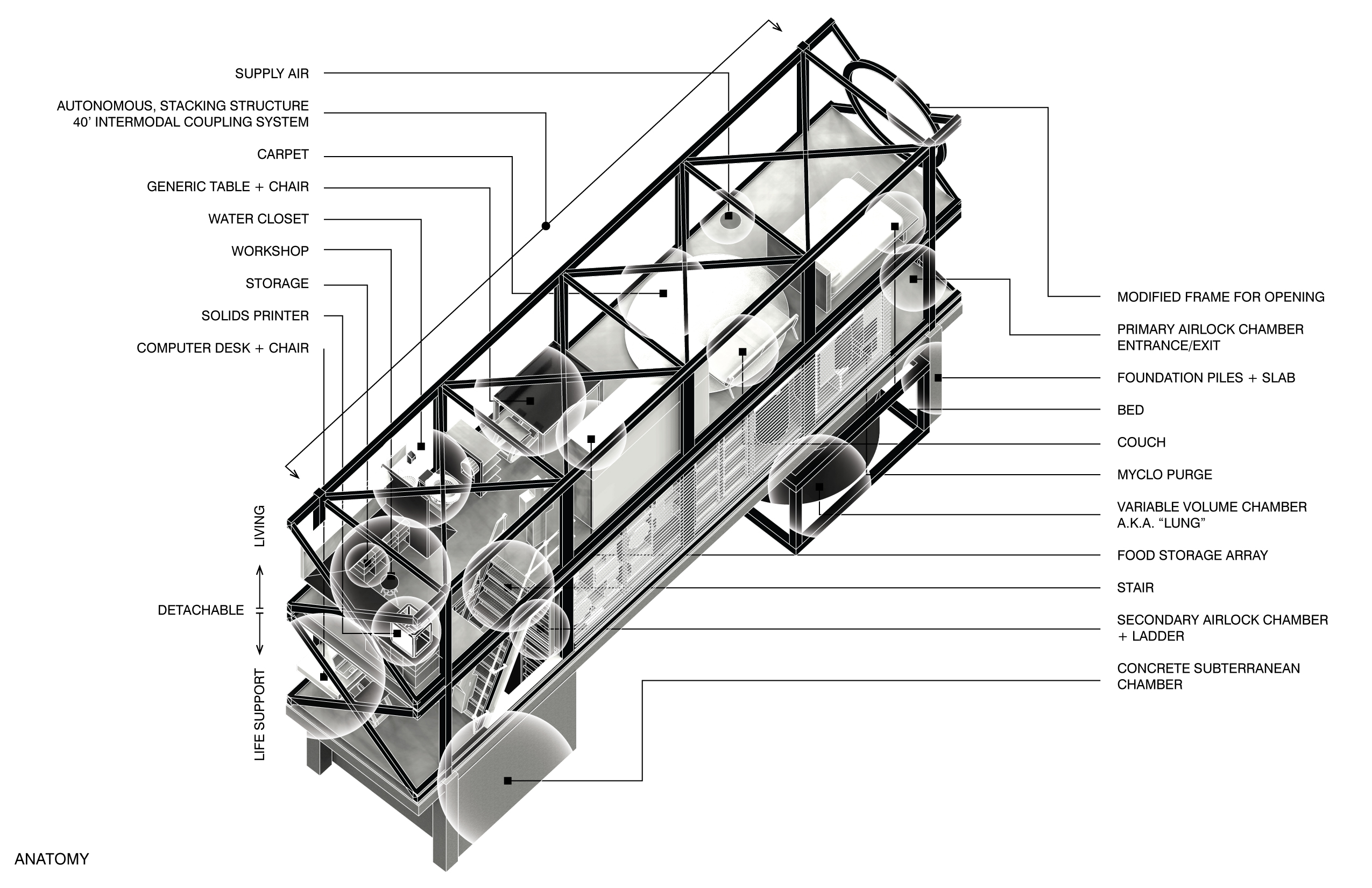
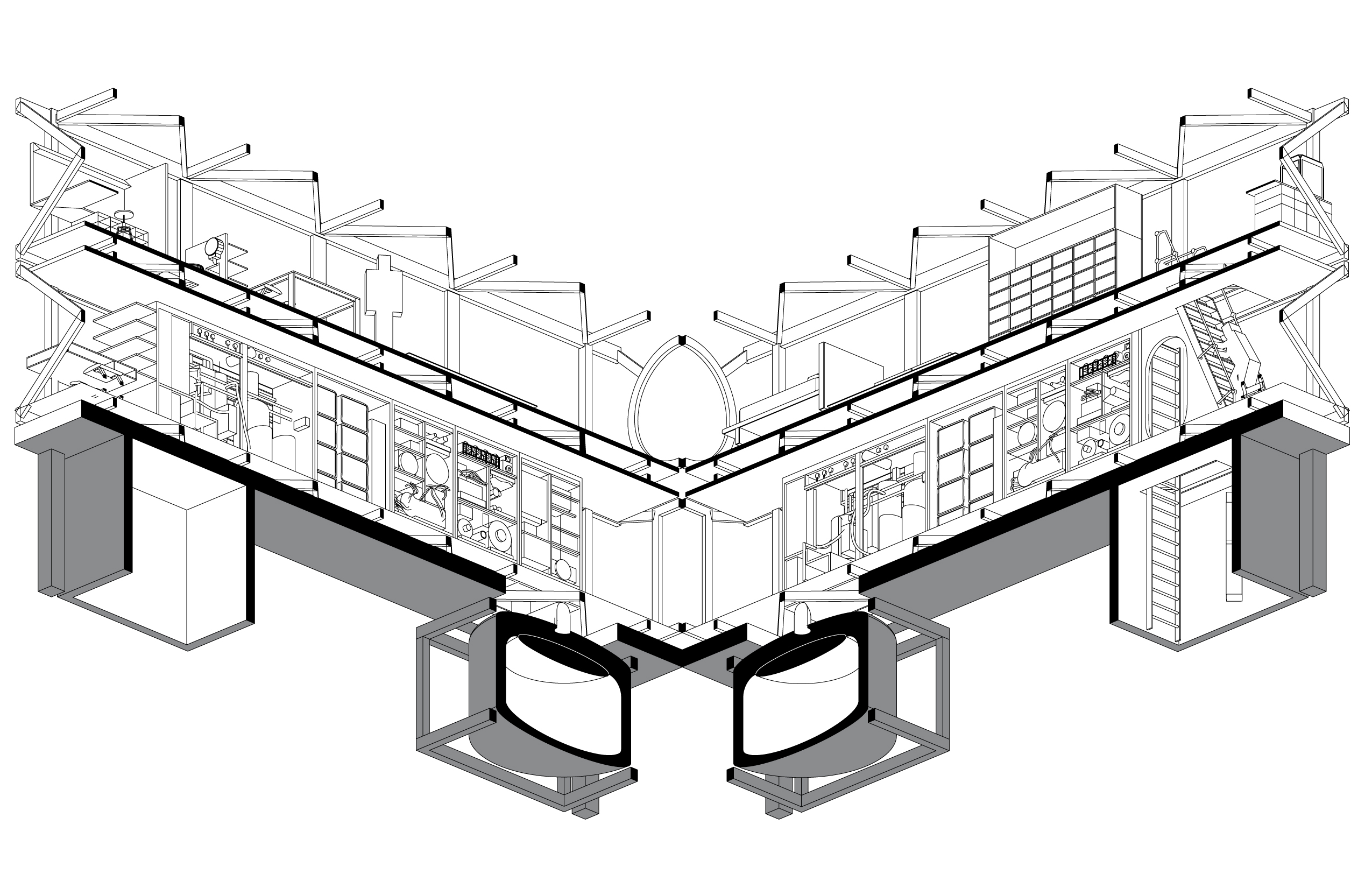
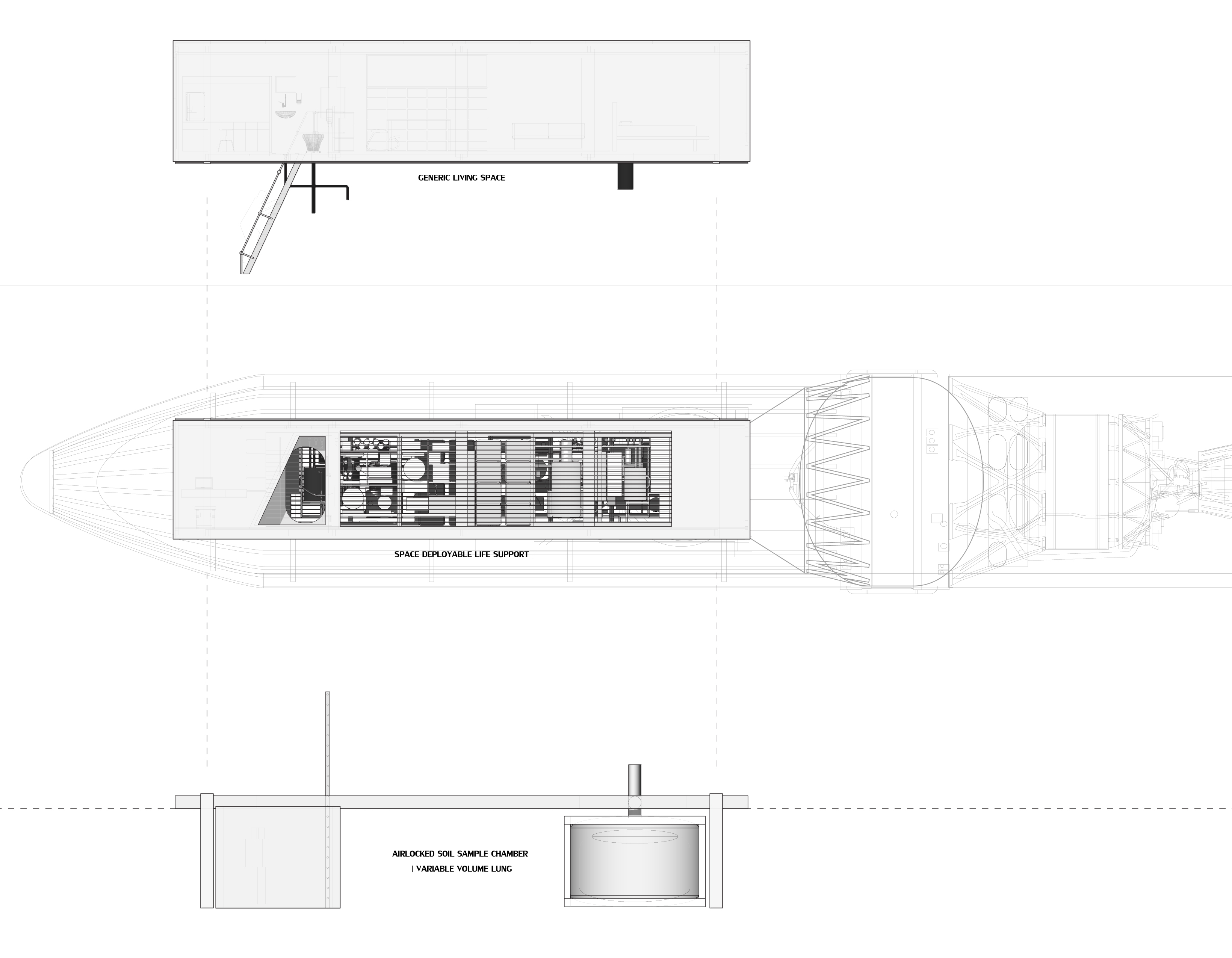


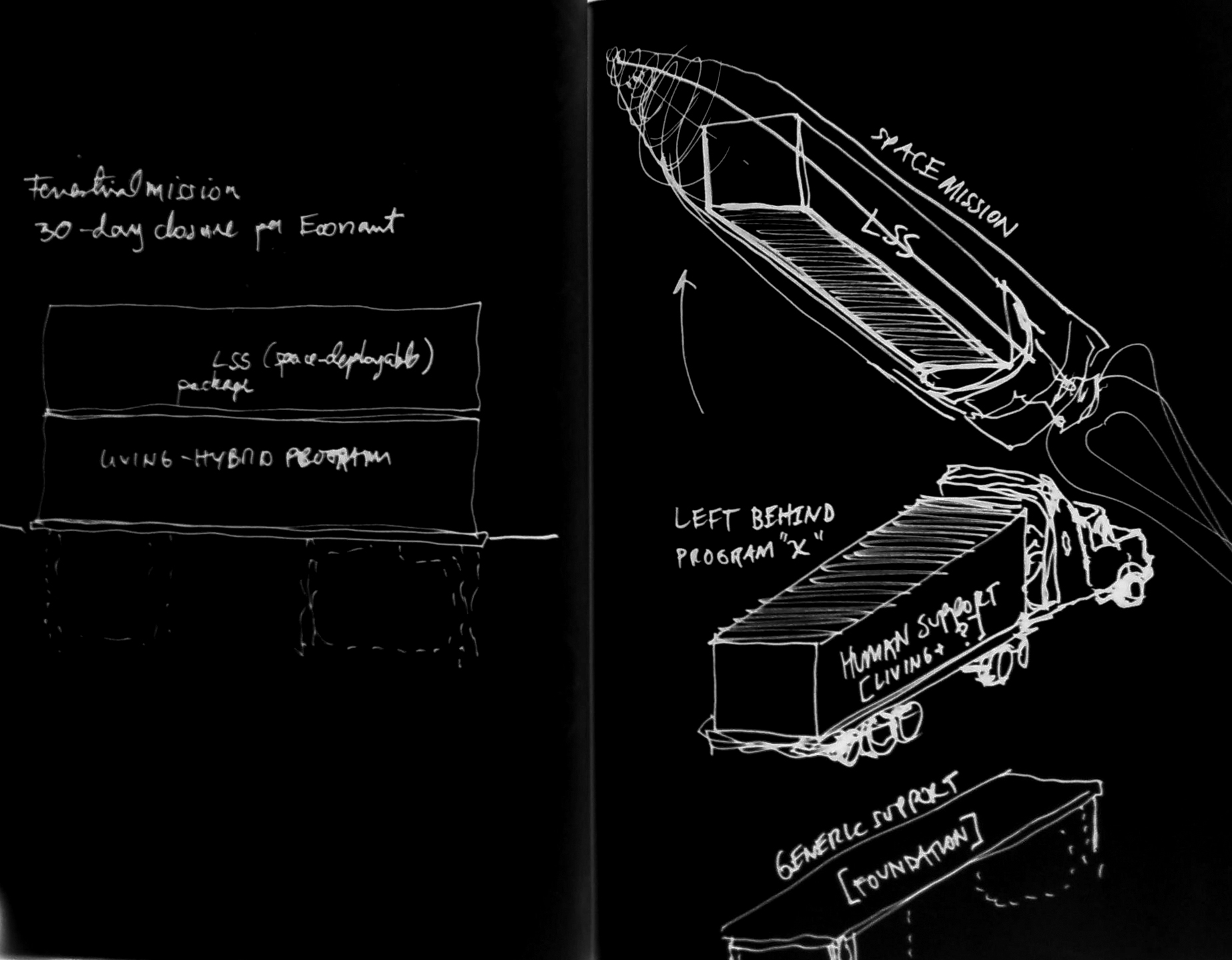
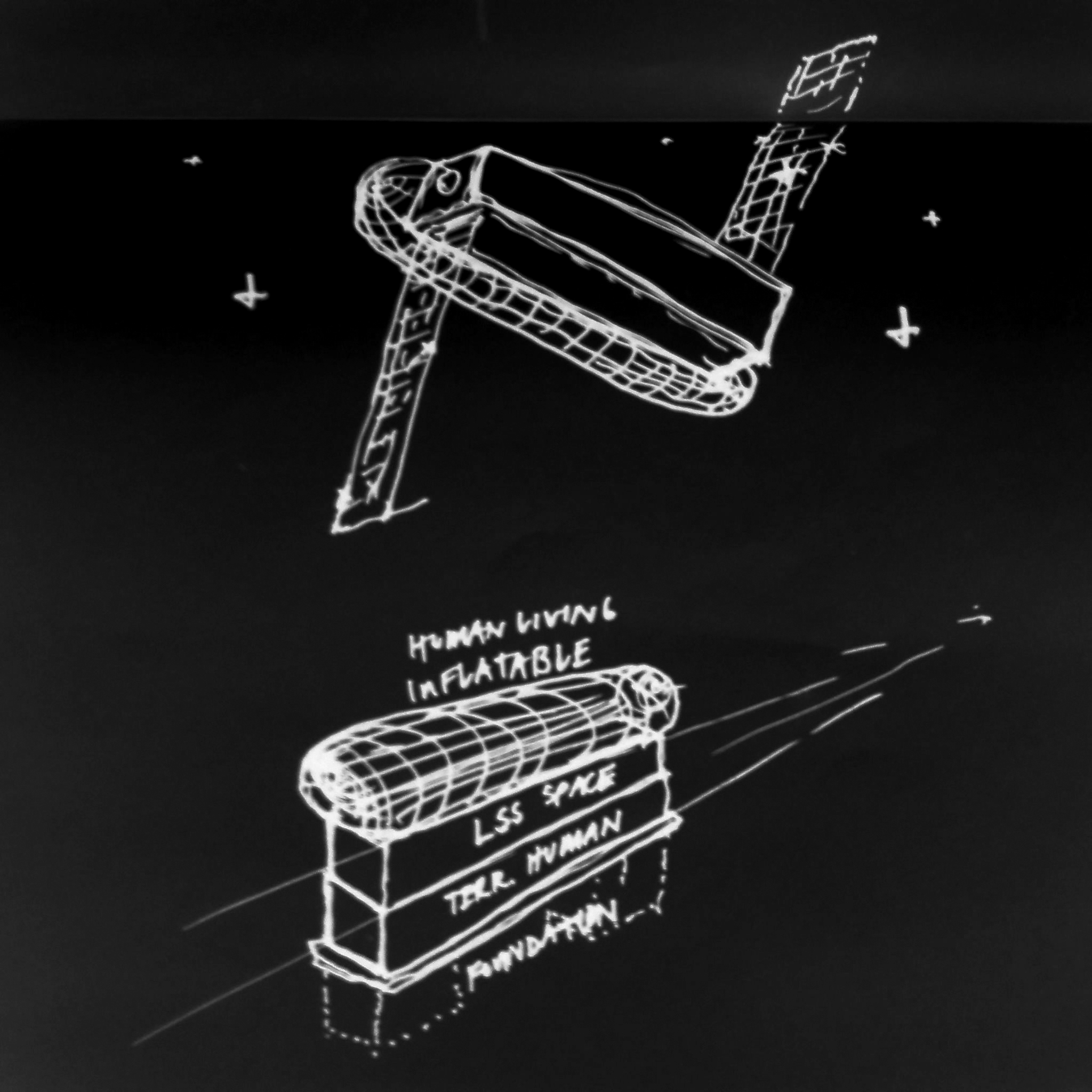




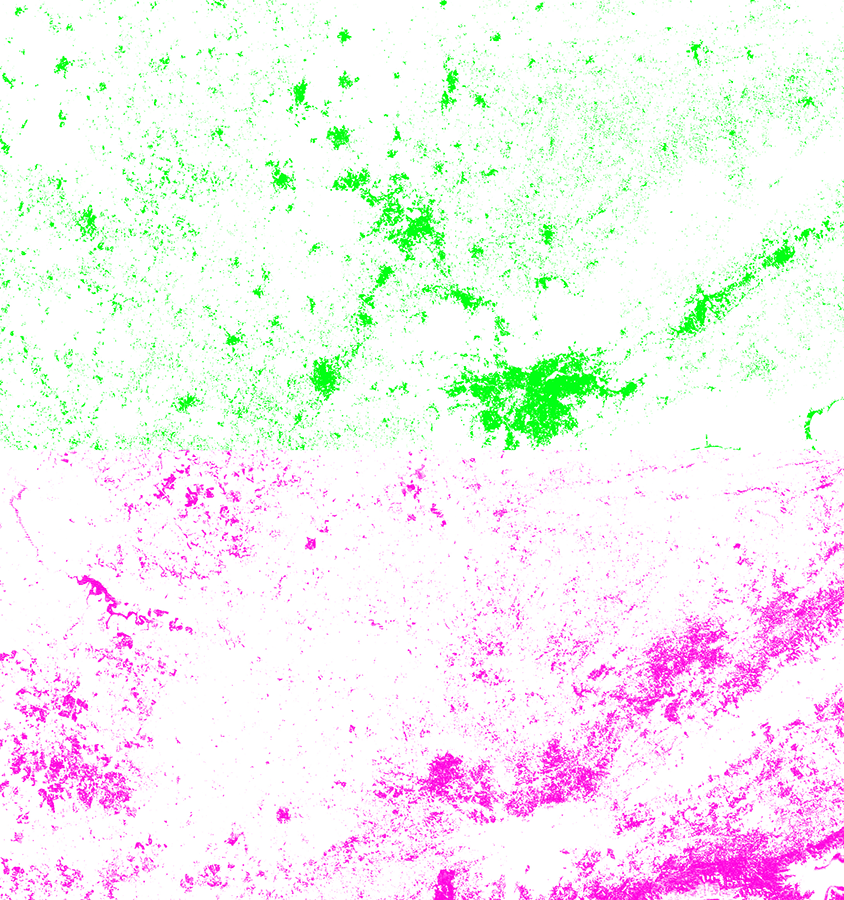
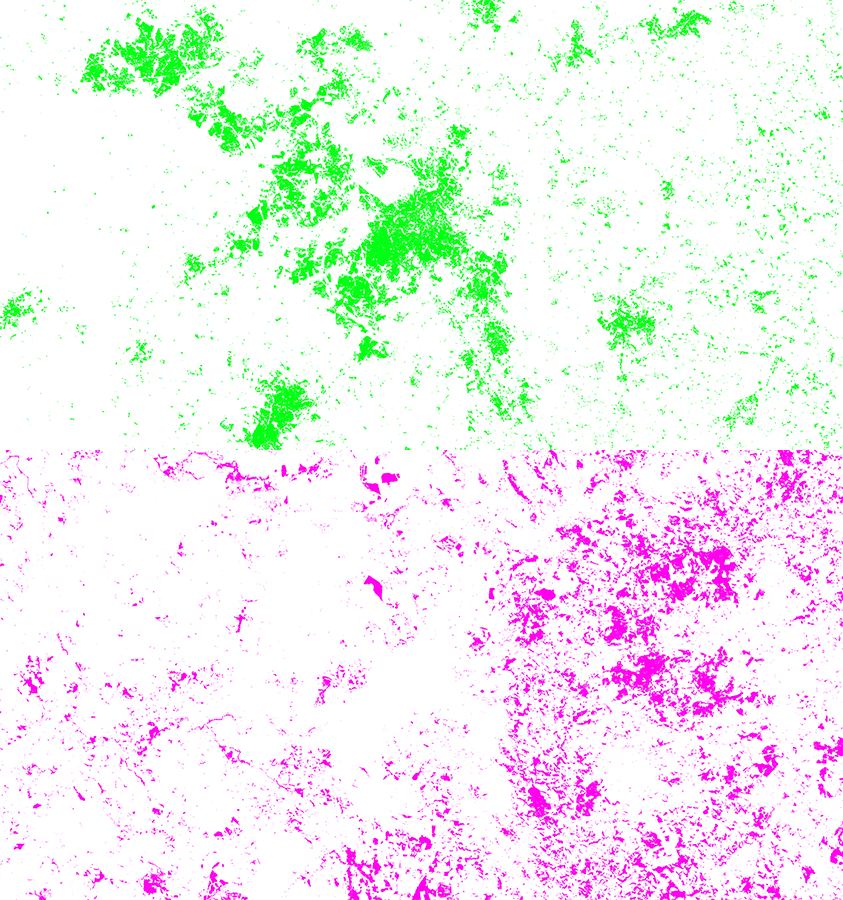
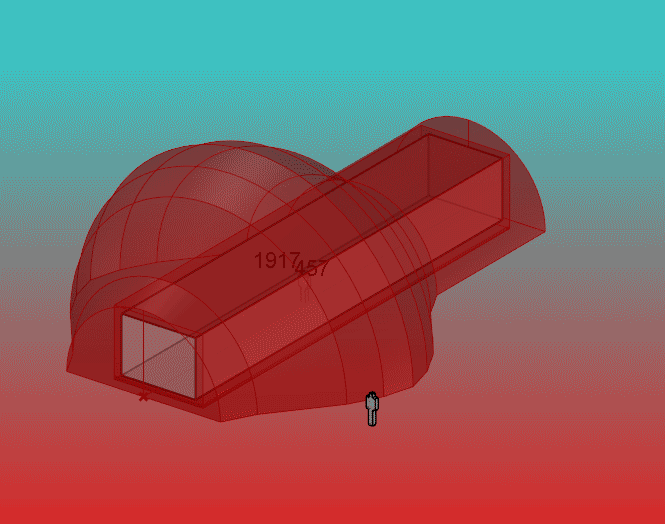
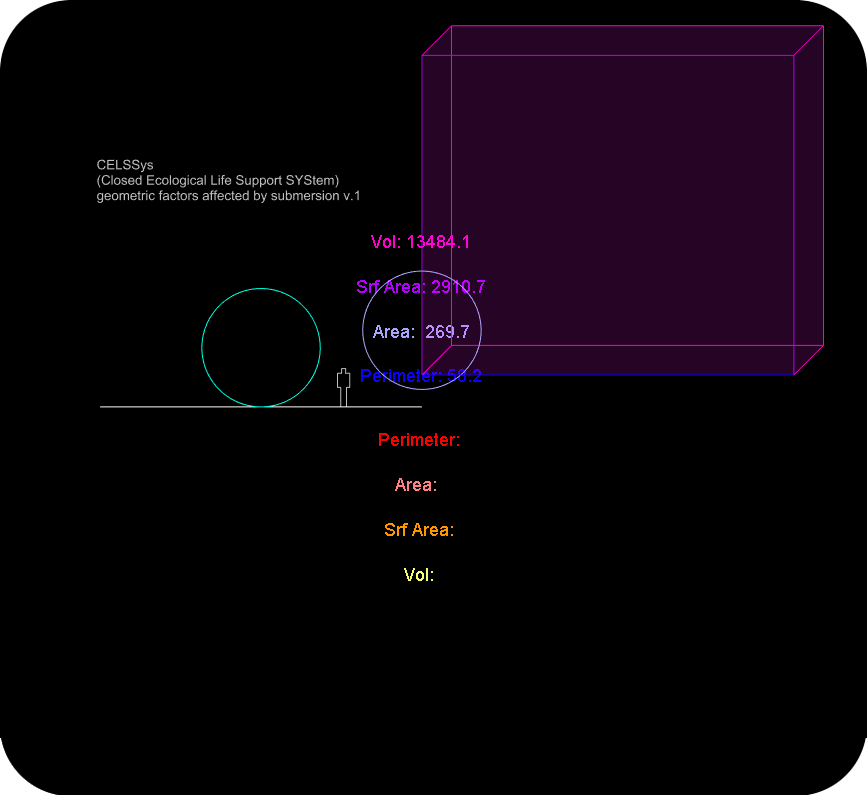


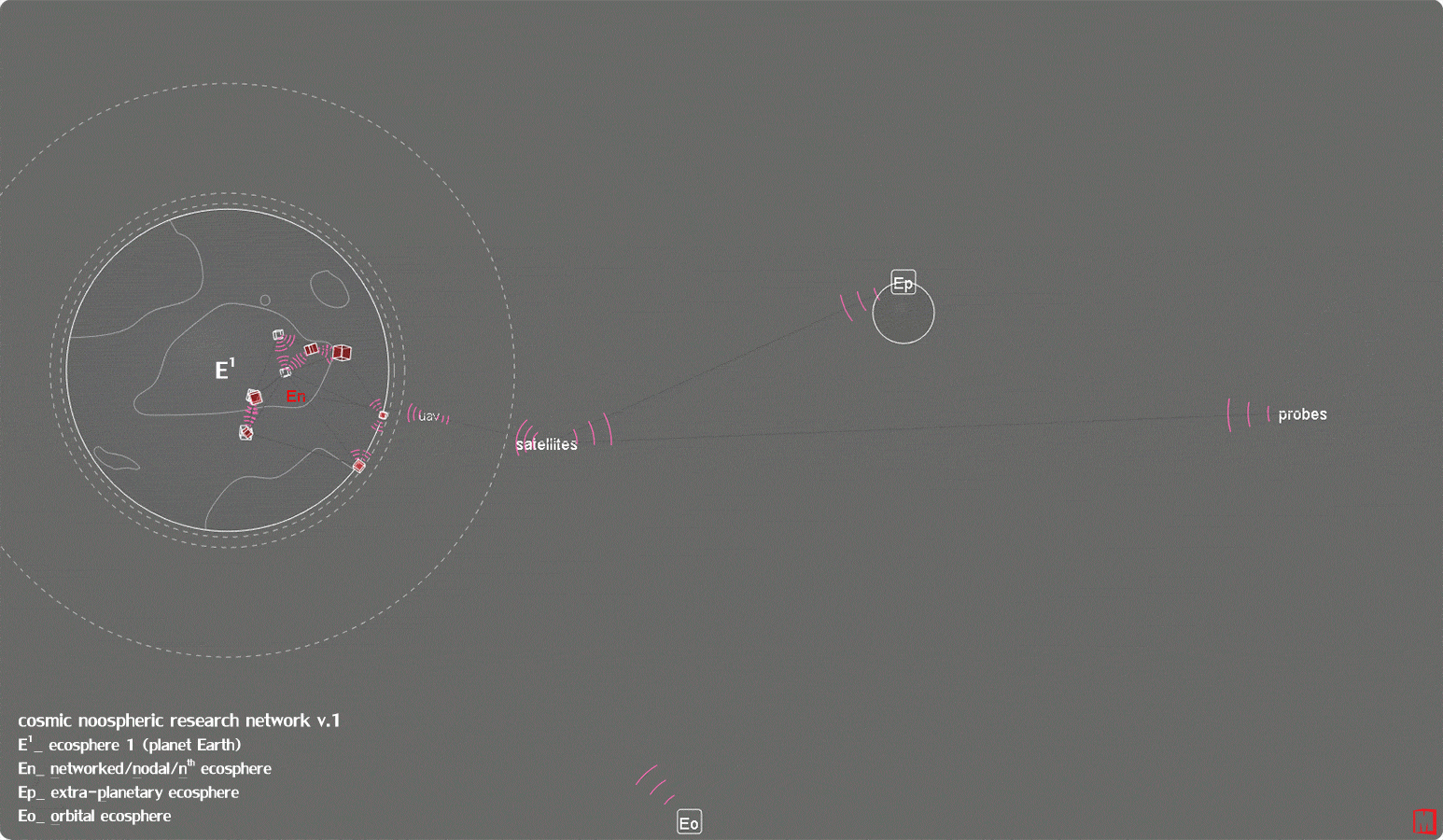
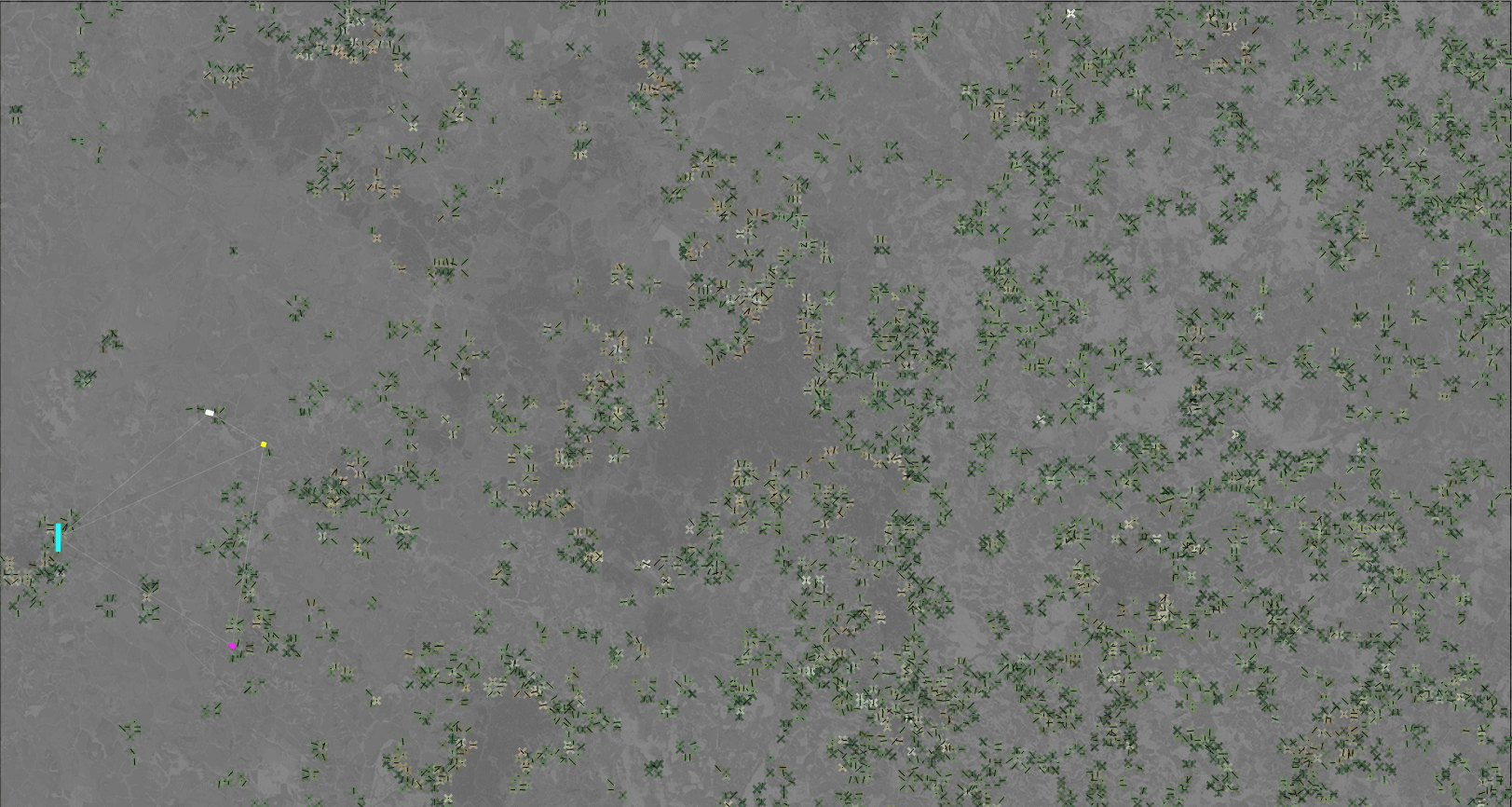
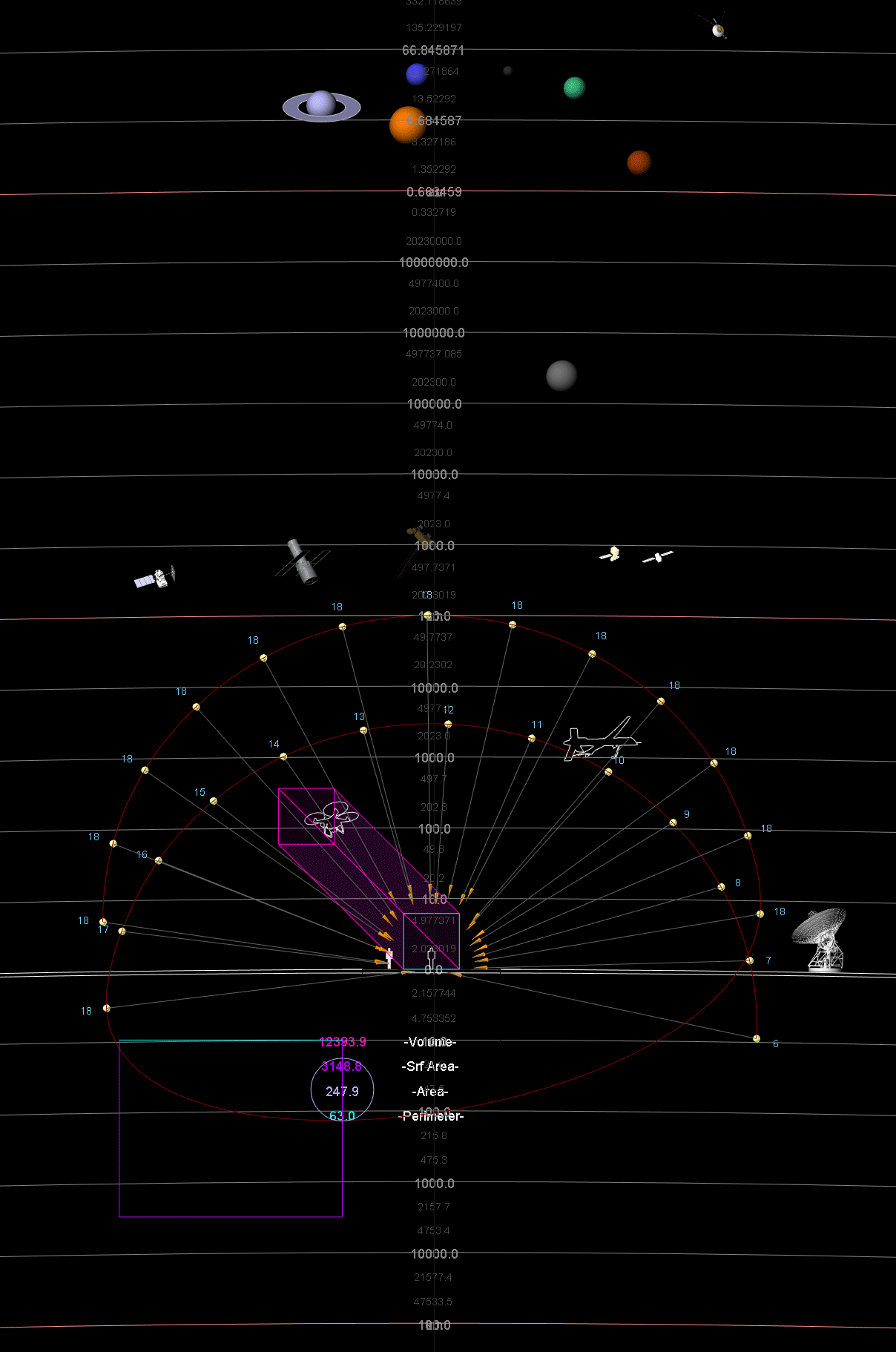
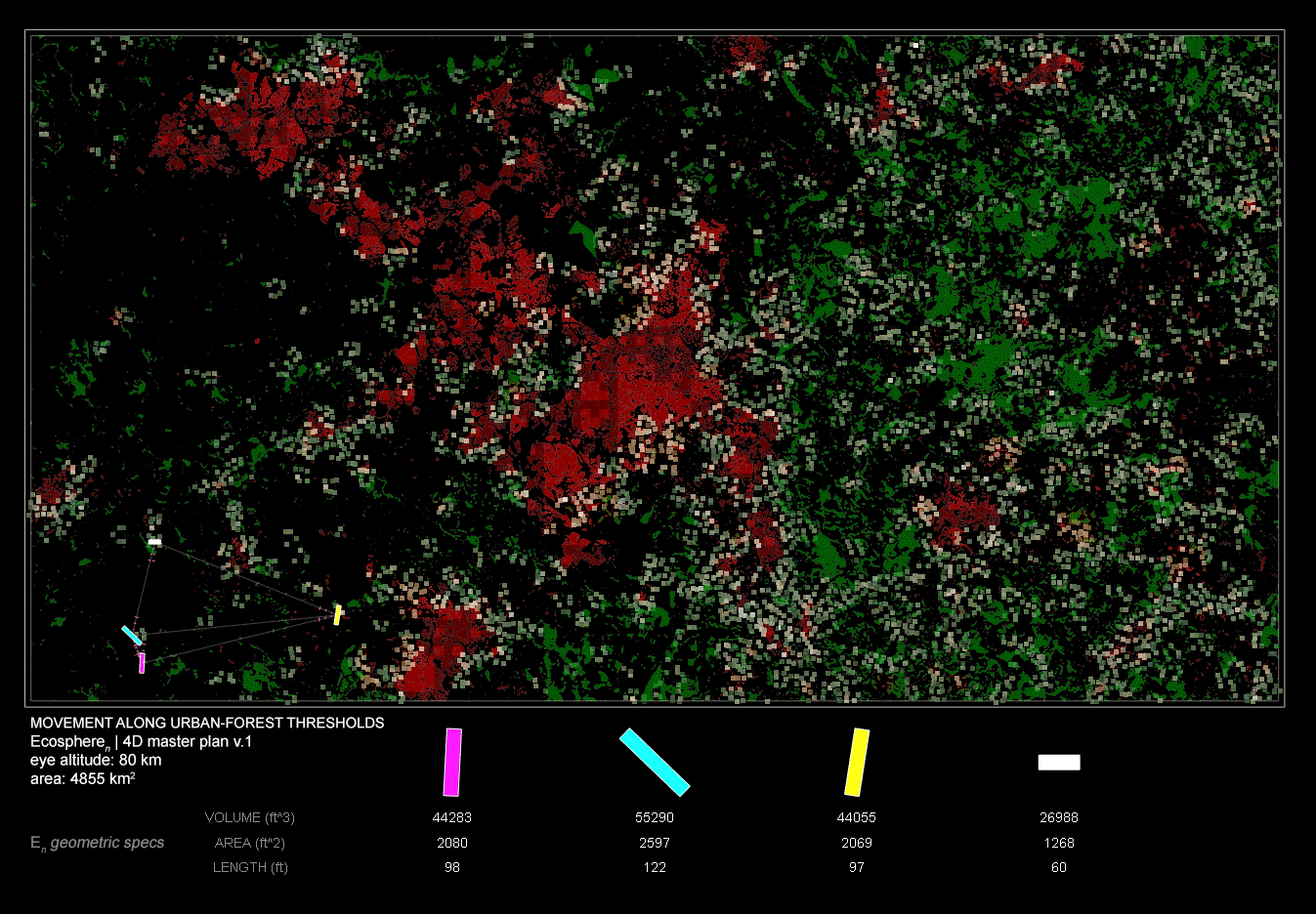
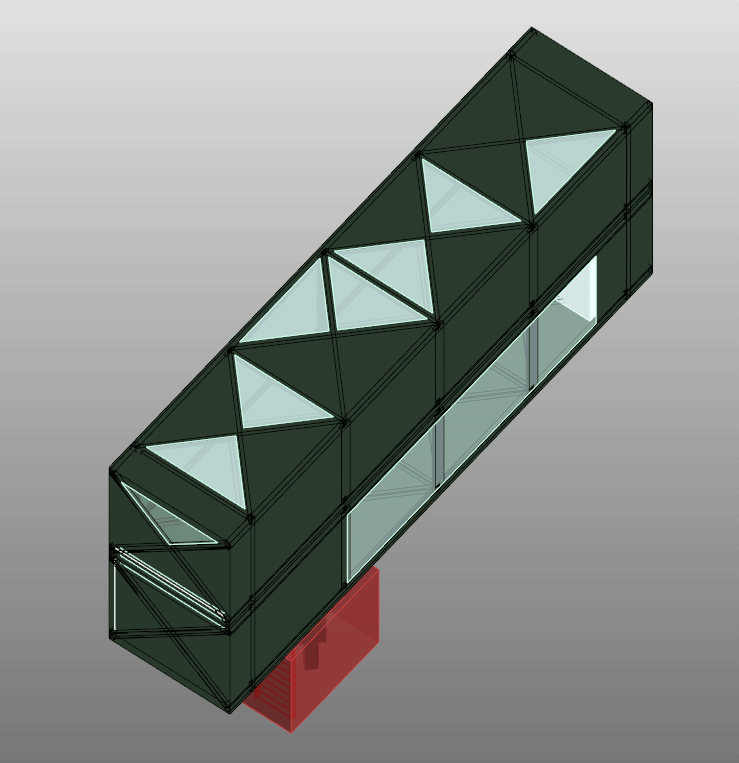


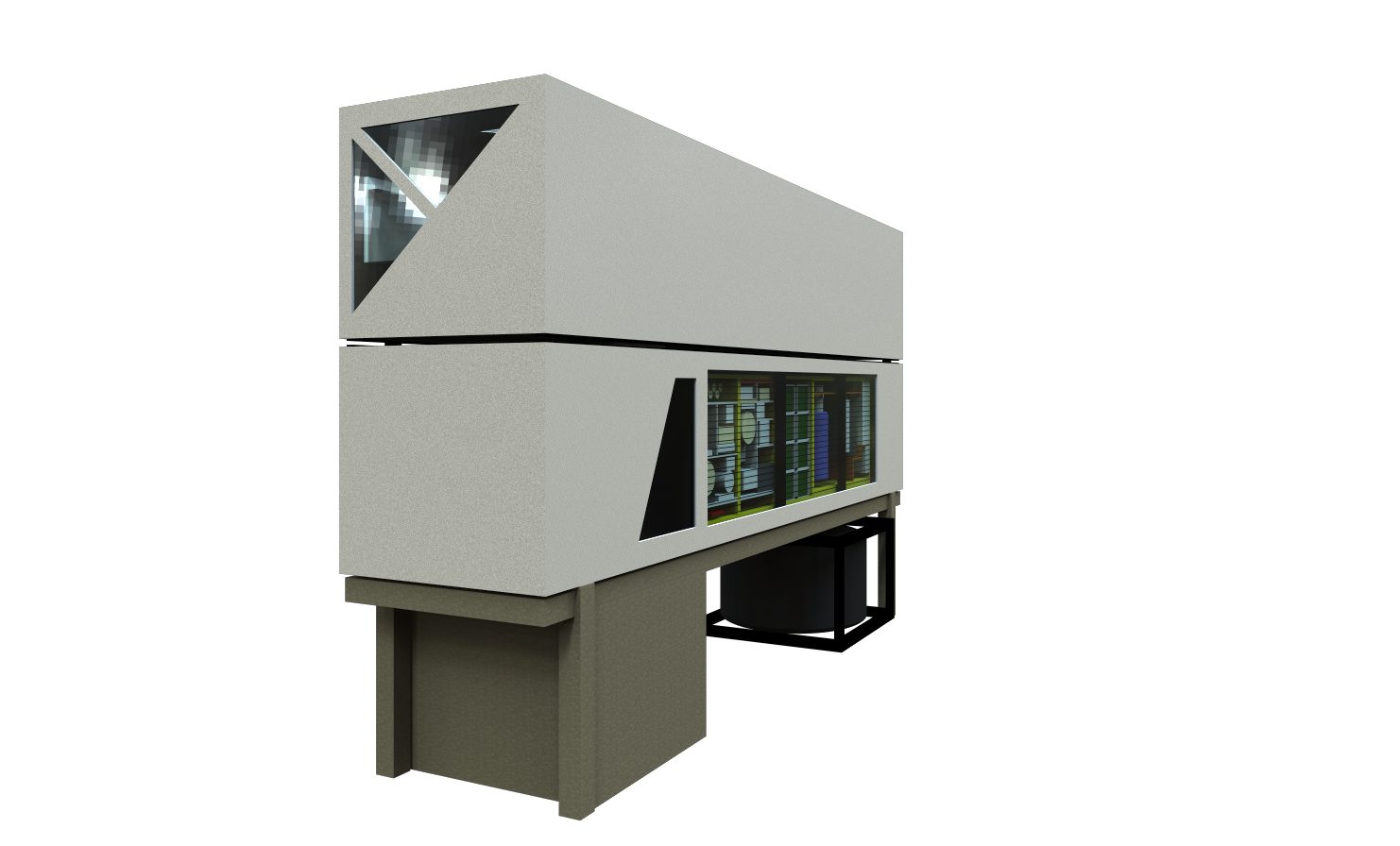


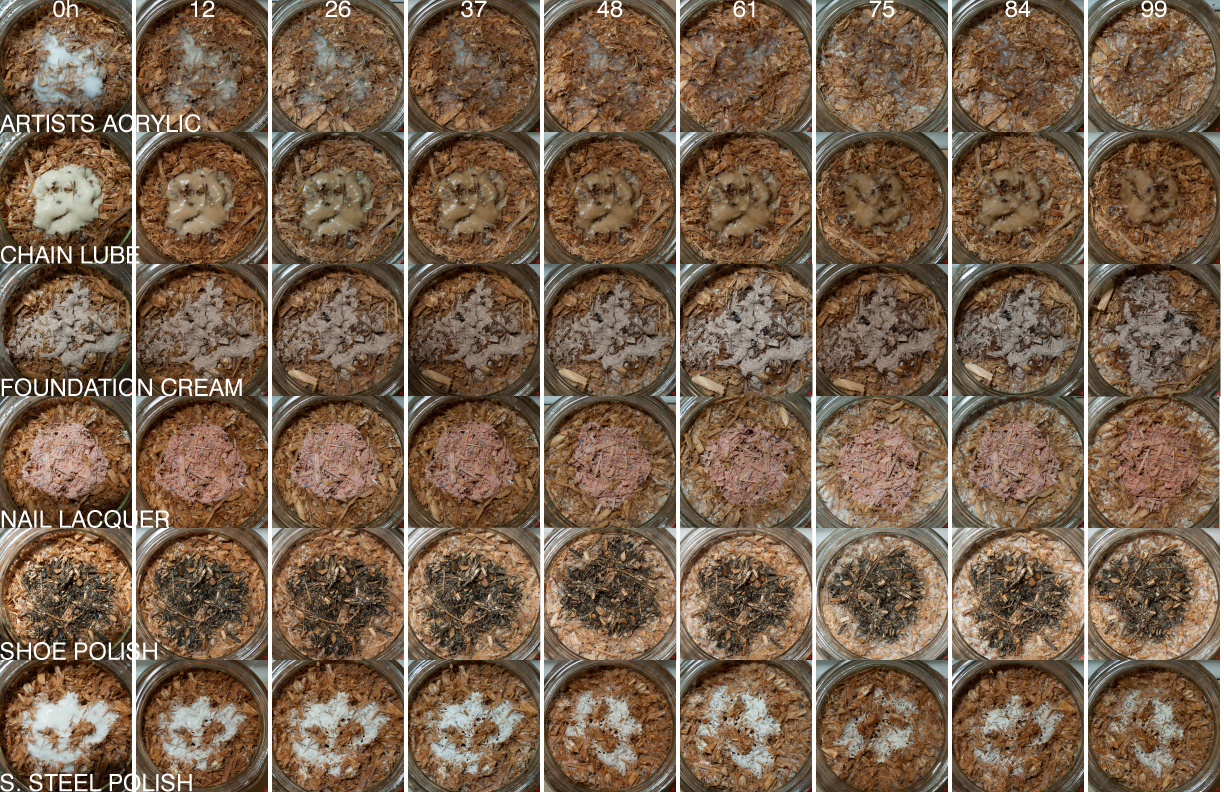
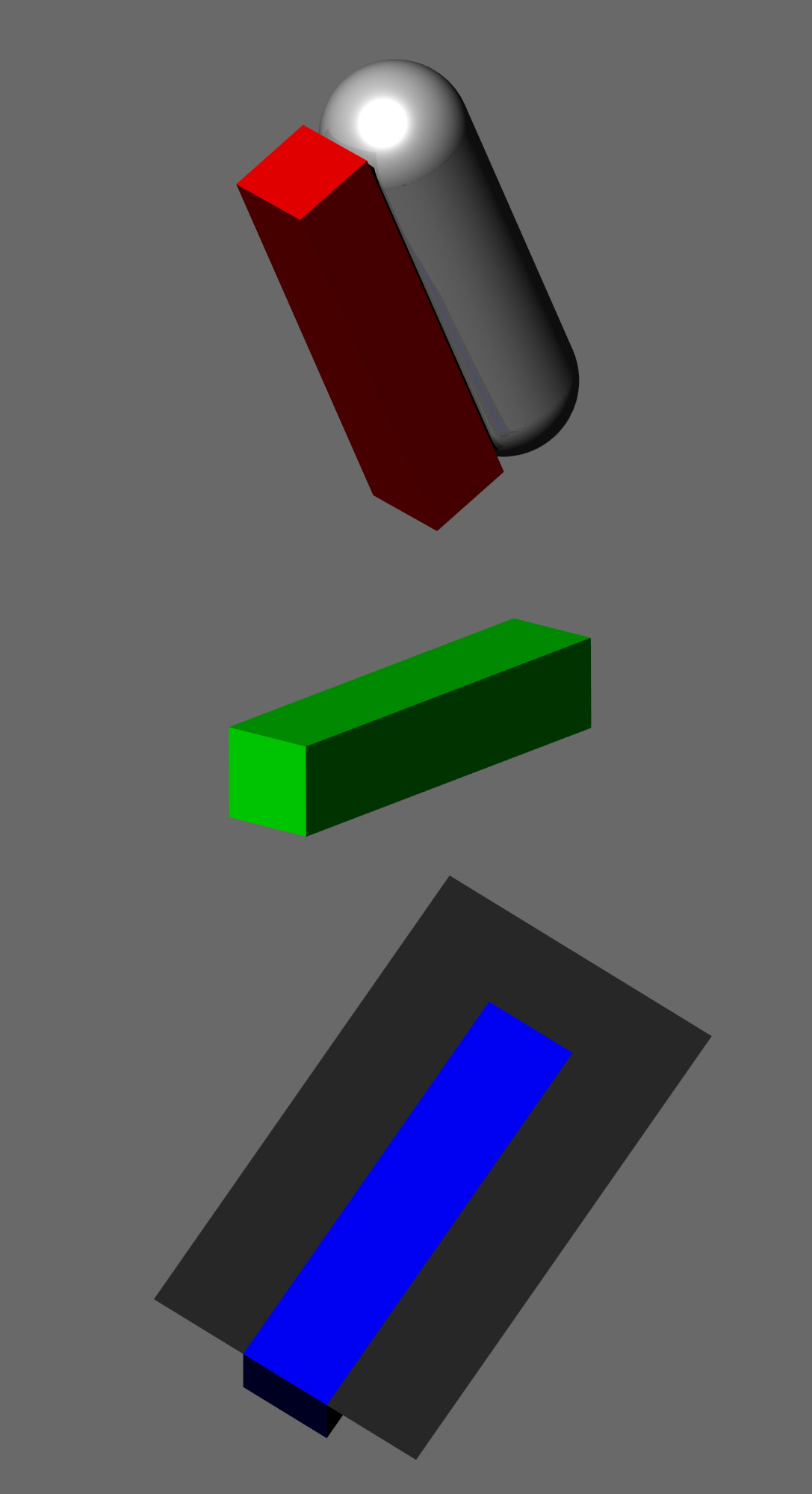


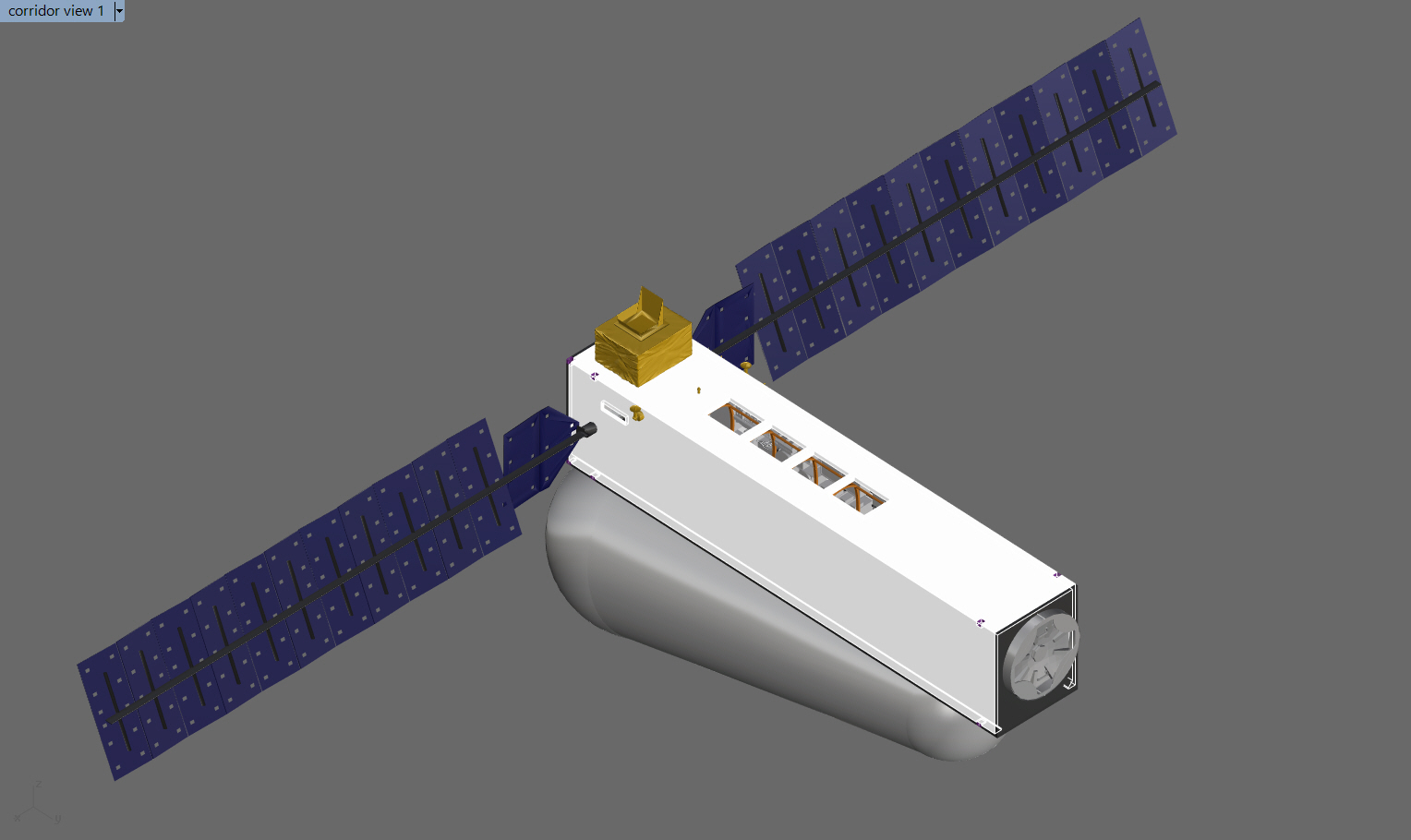


Description
A Noosphere is an intelligently managed hyper-ecology: a marriage of the Technosphere with the Biosphere, of the human with the non-human.Just as the mind is the intangible result of measurable neuronal activity, so the Noosphere is only achieved through an understanding of tangible, measurable relationships. A Noosphere is invisible, yet we can begin to "see" it through its visible and measurable constituents. We are familiar with this notion through ecology, a science of relationships. However, ecology's subject is so vast, so utterly "hyper", that the field is notoriously deficient in experimentational component -- {still version of animated log drawing} instead it has built for itself a global machine of terrestrial, aerial and orbital sensors. This mechanism is, in a sense, itself the project yet it is also the technological site of the project. Simply put, CELSAn, a distributed network of sealed intermodal architecture. It's immediate site is a country that holds 10% of the planet's landmass and the world's majority rainforest, being razed illegally and legally for agriculture at an depressing rate. It is at the front lines of a struggle for a noosphere. However as amajor emerging economy with a burgeoning space program and the world's best positioned launch center, Brazil is in a good place to invest in a radical new idea. Within Brazil's vast metabolic fabric,Ecosphere [n]odes are sited at ecological edges such as the borders between forests and urbanity since is at these human-nonhuman bridge points are wherenoospheric researchcould be most beneficial. These are the sites of terms like deforestation, sprawl, and desertification.Scientifically, the object is what is known as a CELSS (Controlled Ecological Life-Support System), an artificial living system whose inputs and outputs are strictly controlled. At its various scales this concept is the sole experimentational, as opposed to observational, basis for ecology. It allows us to construct and monitor complex relationships while theoretically being able to account for every last molecule. Though certainly lesser known, the LSS is of equal significance to it's historical and technological cousin, the rocket [invented by these contemporaries]. Rockets and Life-Support systems are also ideological cousins, since thevery notion of ecology was only invented once Earth became a very, very special locality. Both the technological and the cognitive framework of the extra-planetary are necessary to move towards a Noosphere.
As a CELSS, CELSAn must follow in the wake of projects such as Biosphere 2 (1991-94), significant for several reasons. Inverse to Buckminster Fuller's metaphor of Earth as a spaceship, this was a spaceship as an Earth. Biosphere 2 was to be an holistic, scale replica of Earth with the two-fold goal of prototyping a Mars settlement and learning about the dynamics of the home planet. It was sealed with 8 inhabitants for a period of 2 years, during which it hosts some surprises. It produced an oxygen-deficient, insect-infested Earth plagued by personal conflicts yet it also achieved the most productive half-acre of agriculture ever, a successful artificial reef, urine recycling and other breakthroughs. Biosphere 2 was also of real cultural significance, receiving scrutinizing attention from the skeptical public media- something that a reincarnation of the project should address
Where Biosphere 2 was an all-encompassing Earth analog, CELSAn is a network of small architectures that become through replication, variation and control, a more powerful scientific tool. As a diffused Biosphere 2, the project avoids the singular media attention that felled the former; instead localizing itself in the vernacular in various phases.
Initially, an CELSAn node is massed as two stacked intermodal (container-sized) structures which begin their lives together. The upper volume is a space-deployable CELSS. The lower volume is a living and research space. For the first phase of its life, CELSA [n] hosts a rotation of "econauts" serving 30-day research missions as the human link in a compact artificial ecosystem.The contributions of various organisms as links in the system is the subject of research. (e.g. How does a local species of fungi (link a), which compete with humans (link b) for oxygen, fit into a 3-link system with fresh water algae (link c). As the knowledge base builds and successful schema are found, the upper volume can be relocated to Brazil's Alcantara Launch Center, where it can be launched into orbit for ~$30 million USD. In orbit, the extremes of closure are tested until the system, closed to all mater, reaches end of life. As on land, the success of a particular variant will be determined by its stability, longevity and environmental quality. However, in orbit factors like radiation and micro-gravity will change the systems behavior. Active nodes on the ground will provide data on their site and interior 'circular economy' as their orbital siblings, observing the Earth, do the same. By occupying both territories, the power of the experiment increases dramatically. Once variations are space-tested, they can be manned and even aggregated. If each node represents "1 unit" volumetrically, the needs of 10 unit space habitat could be extrapolated from CELSA+An data. The lower volume left behind is available for appropriation by the local community as a utility core; a legacy of the national space program.
Project Team
Jeffrey Montesdesigned as a student at Columbia University GSAPP (Graduate School of Architecture, Planning and Preservation) as part of Advanced Studio 5: Return: Biology, Computation and the Circular Economy taught by David Benjamin and Rui Wang.